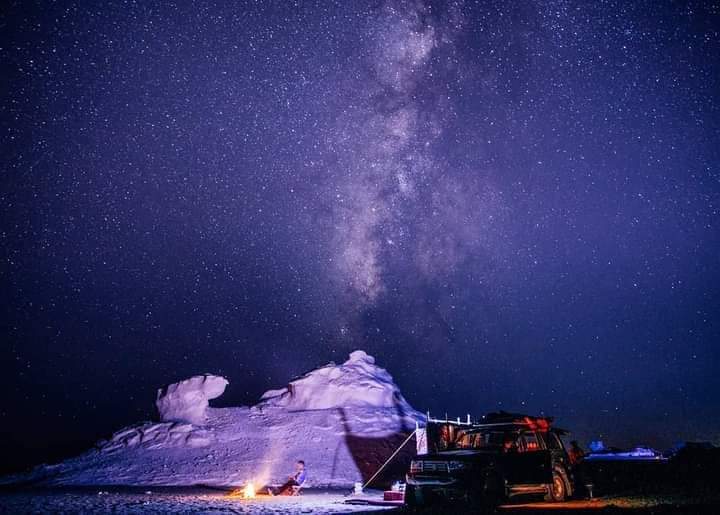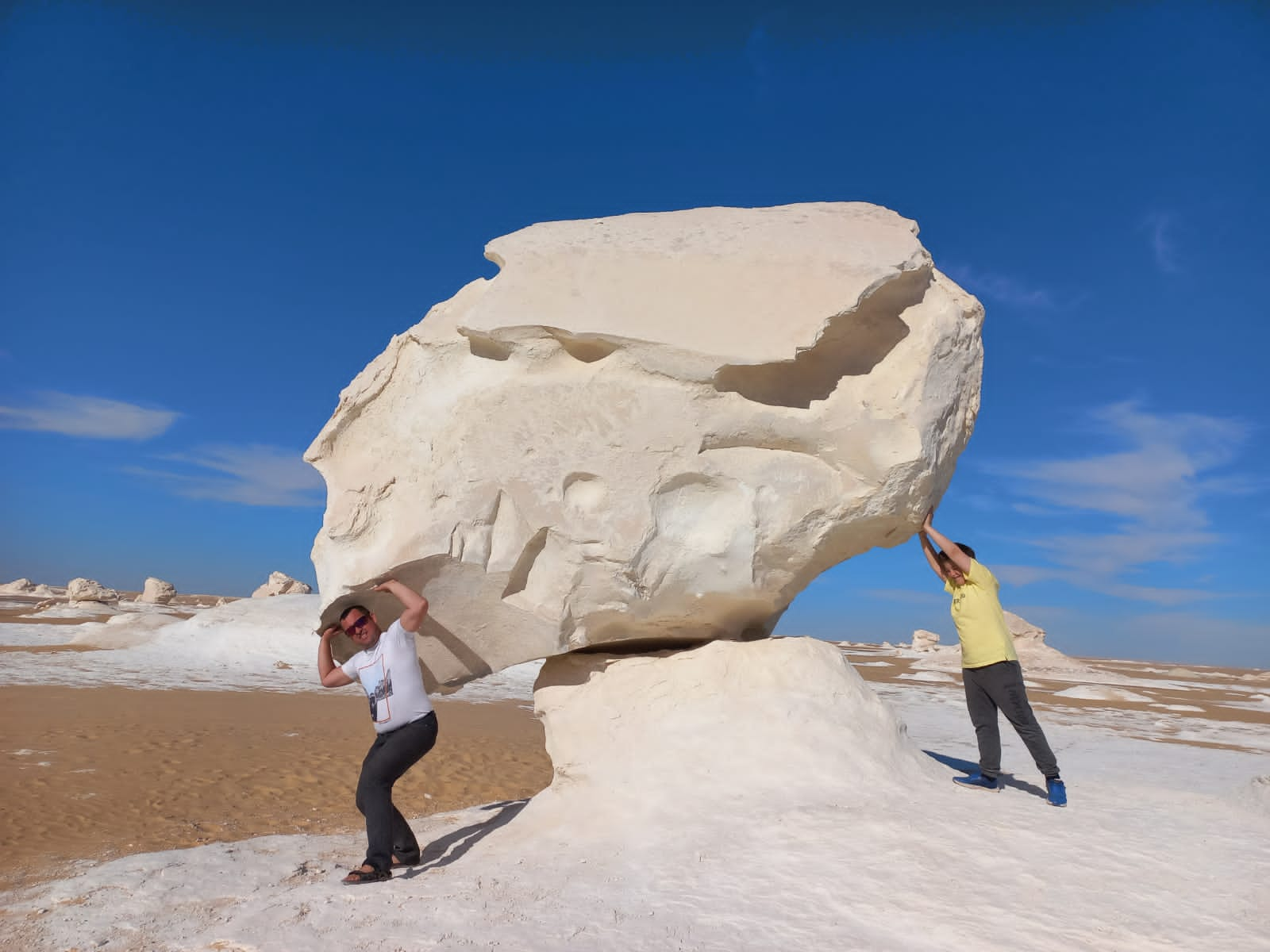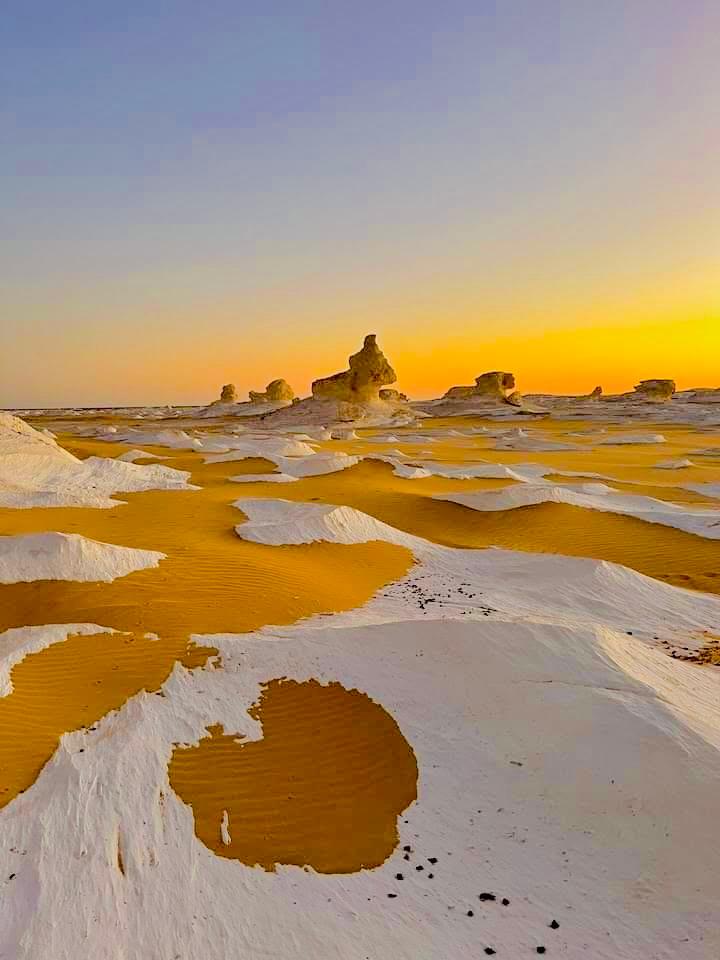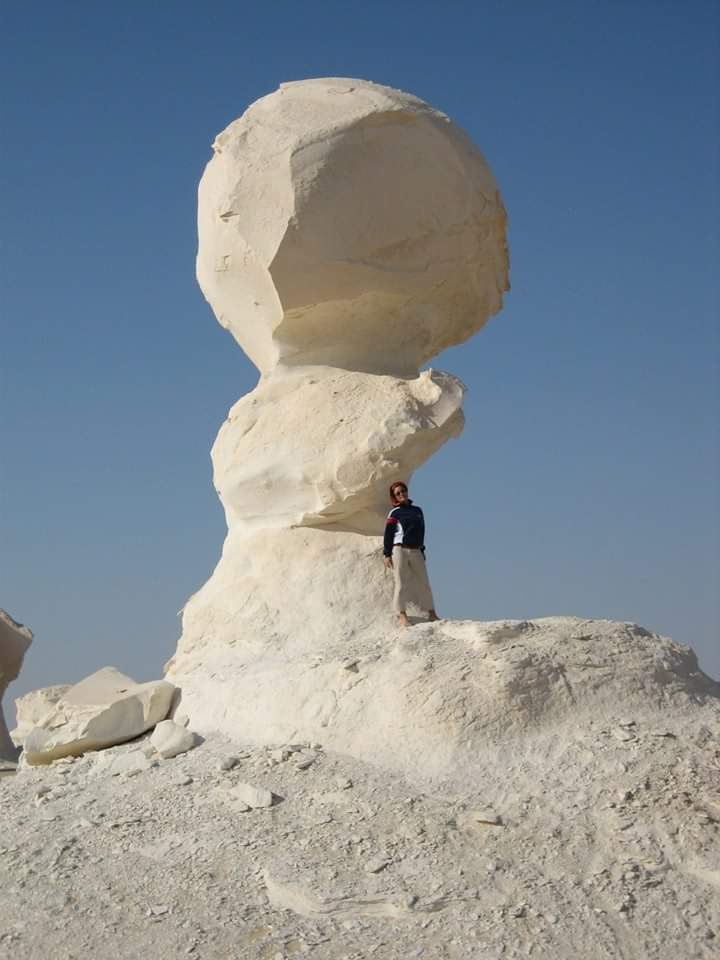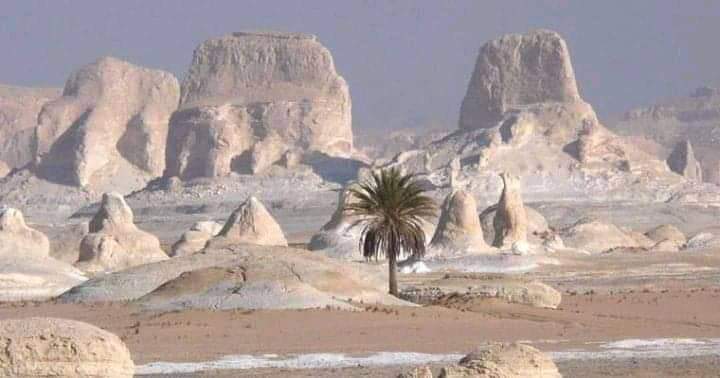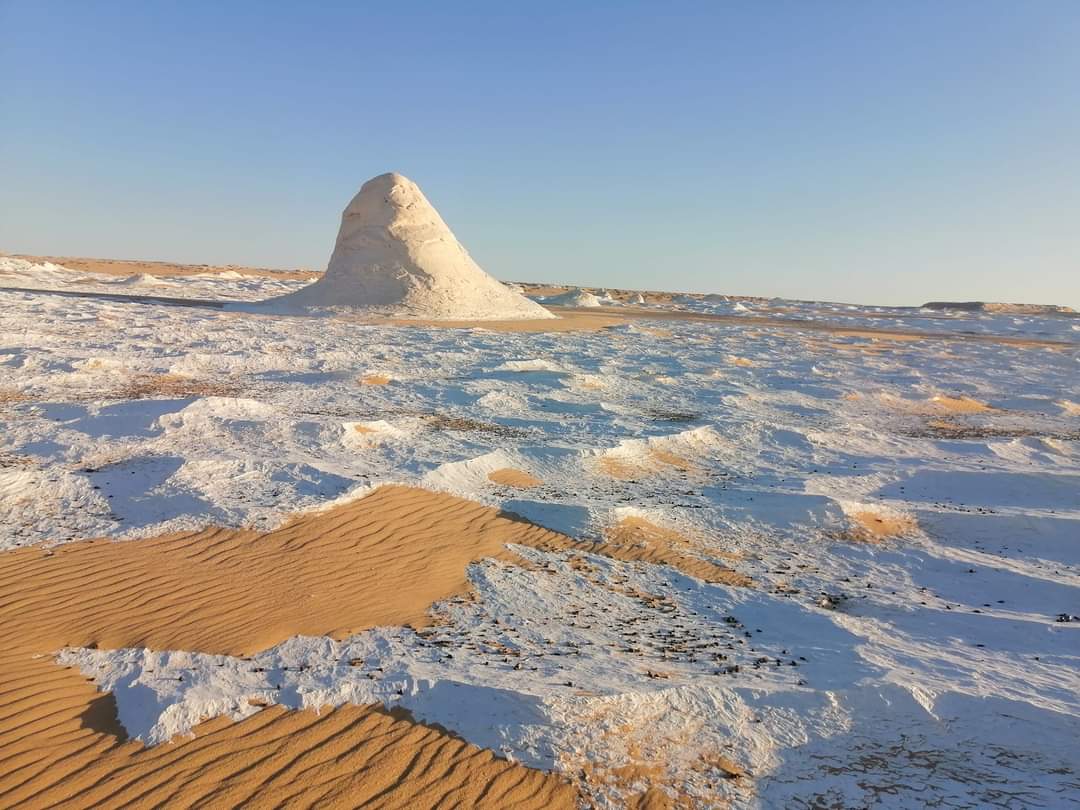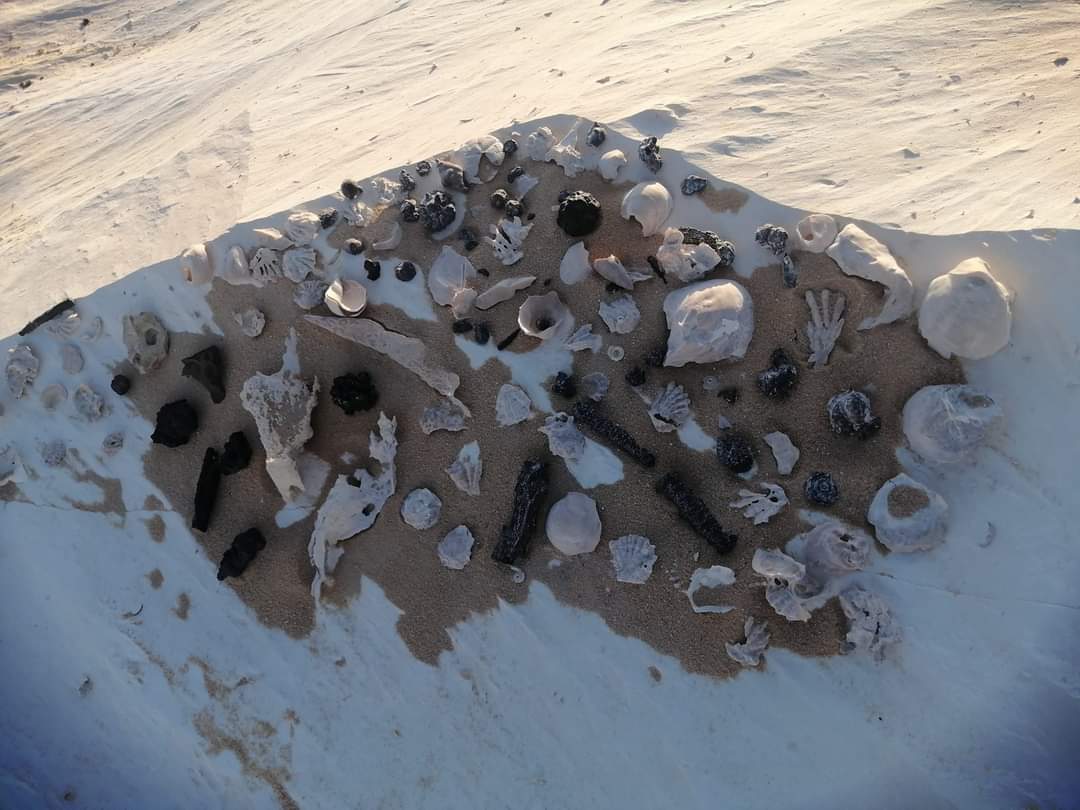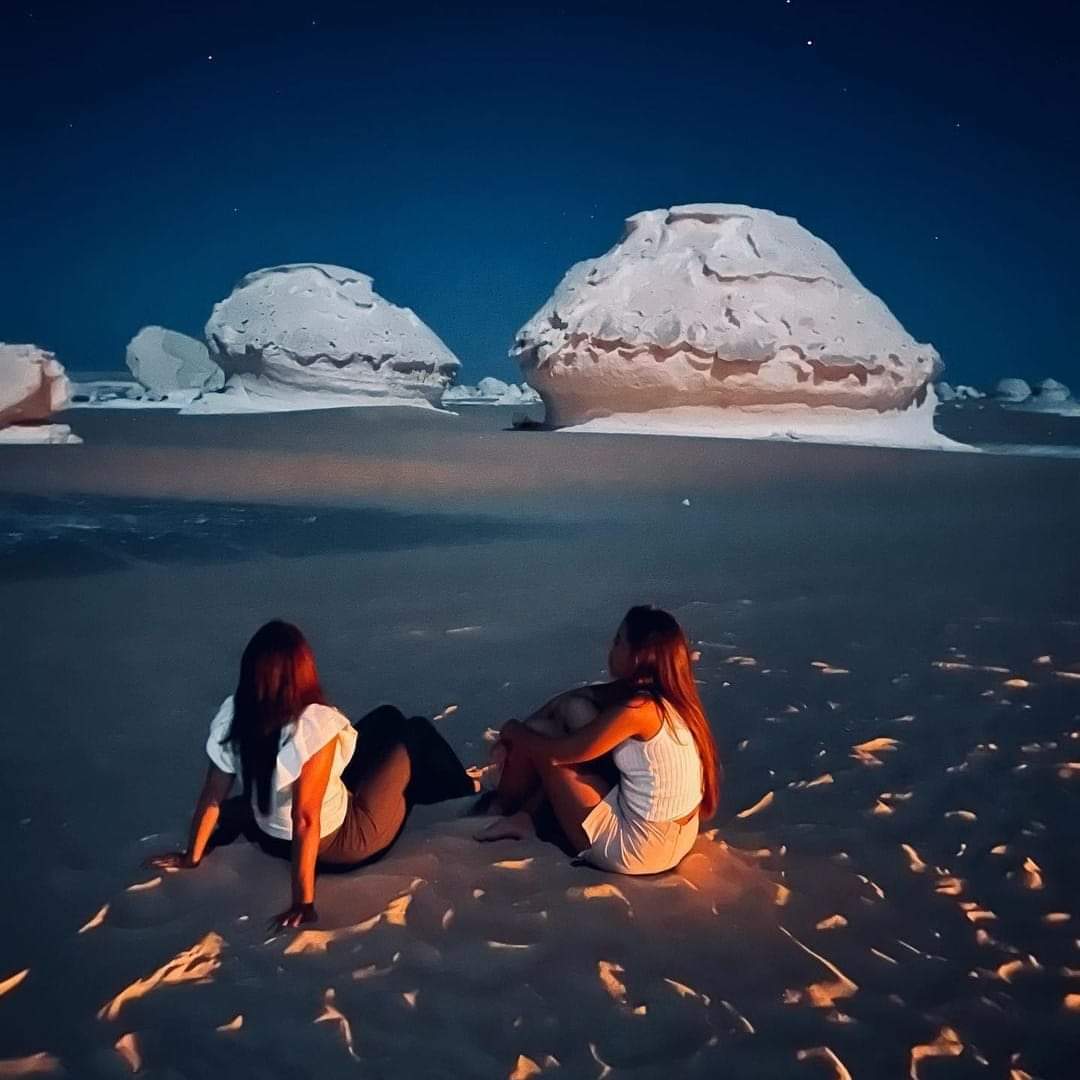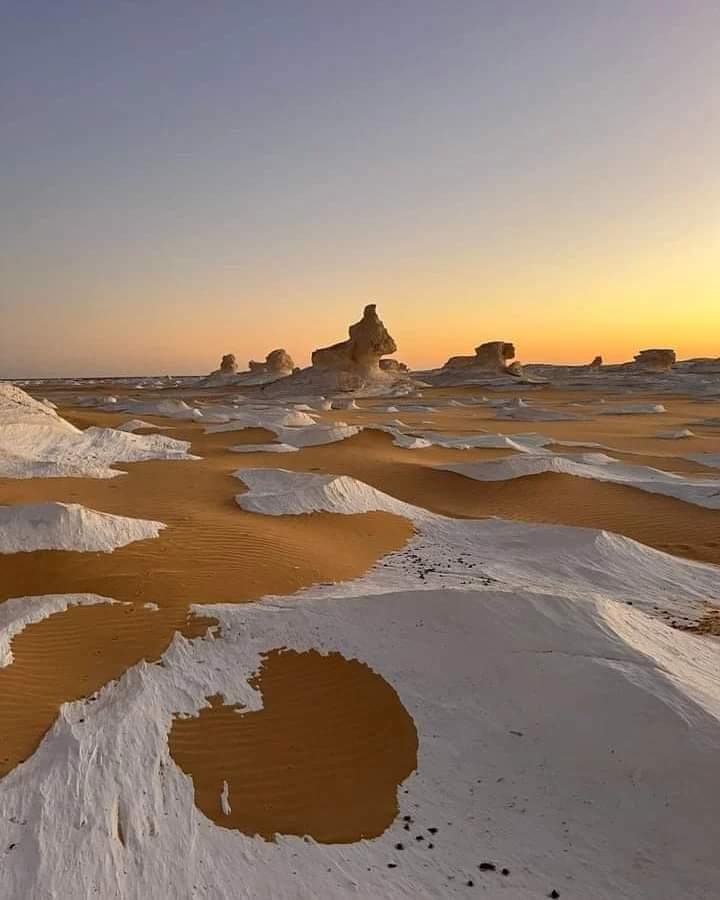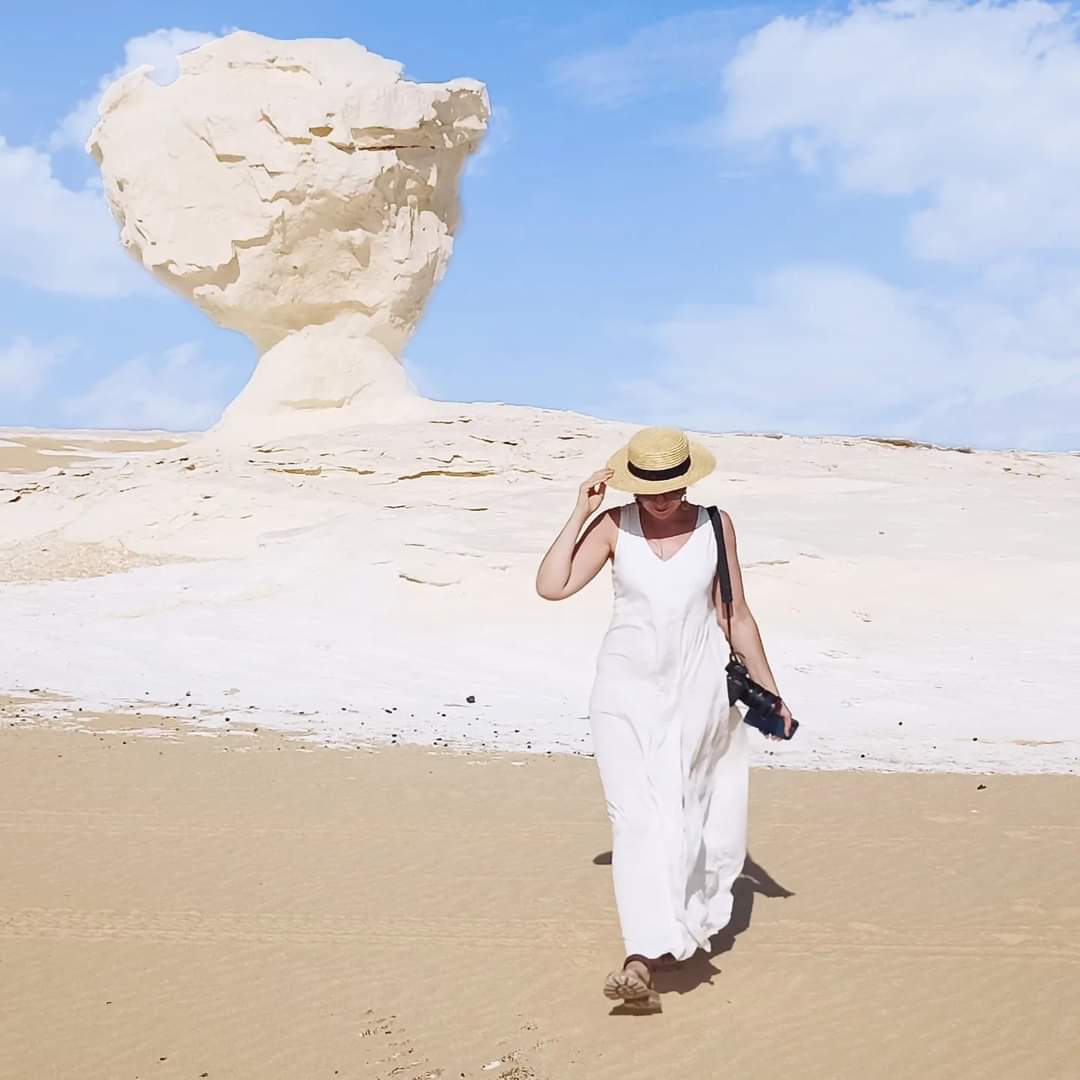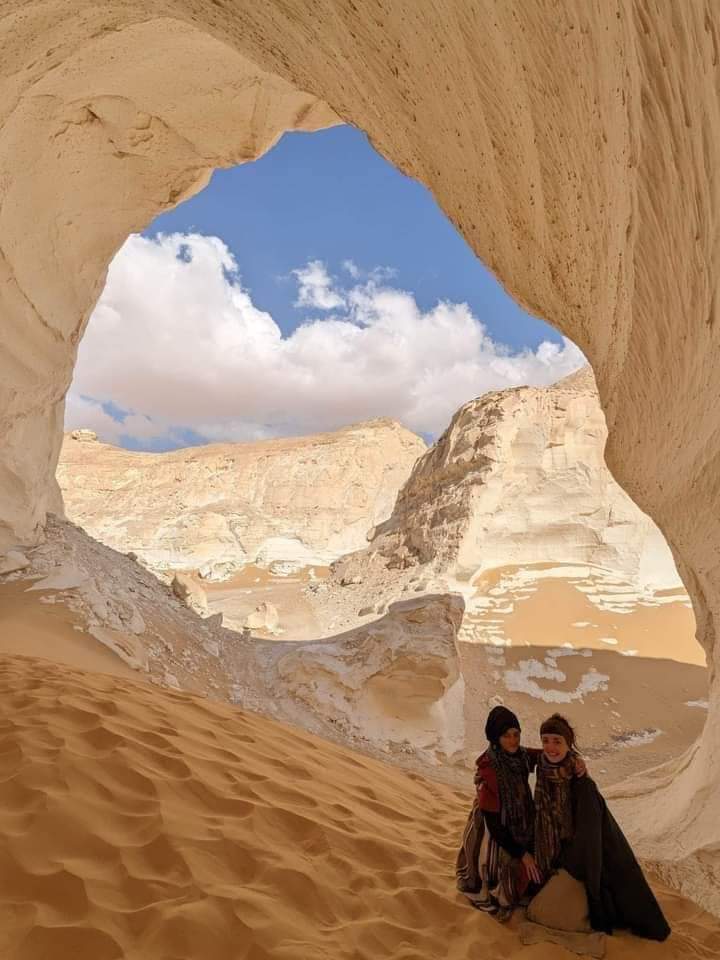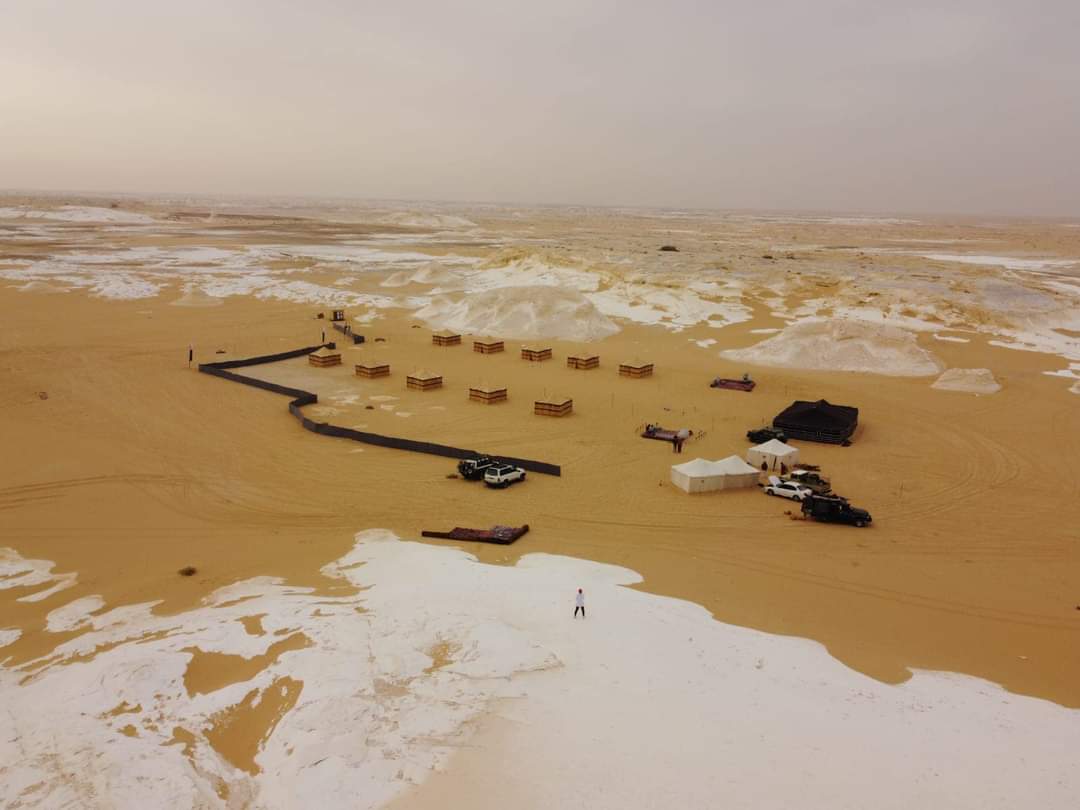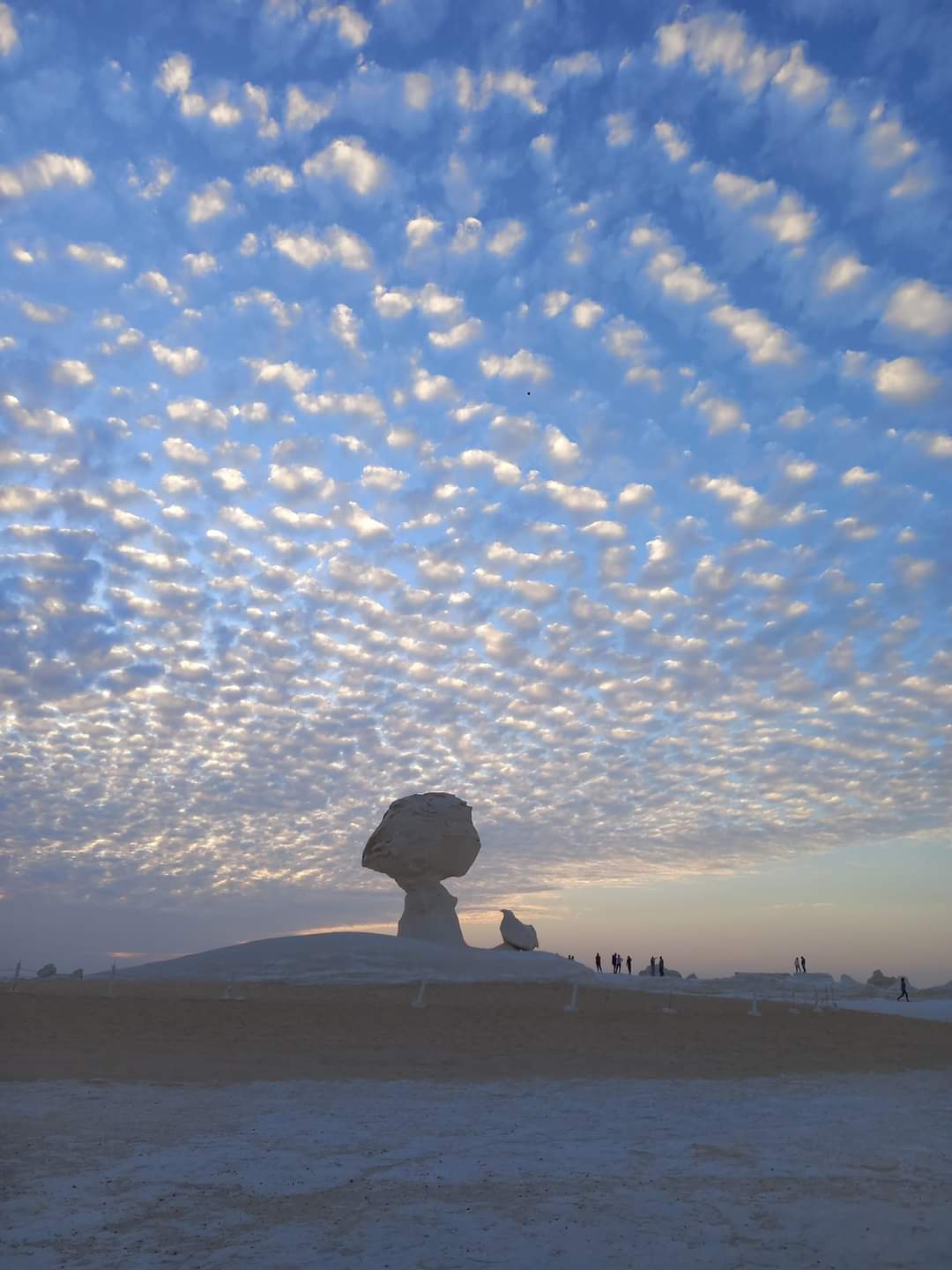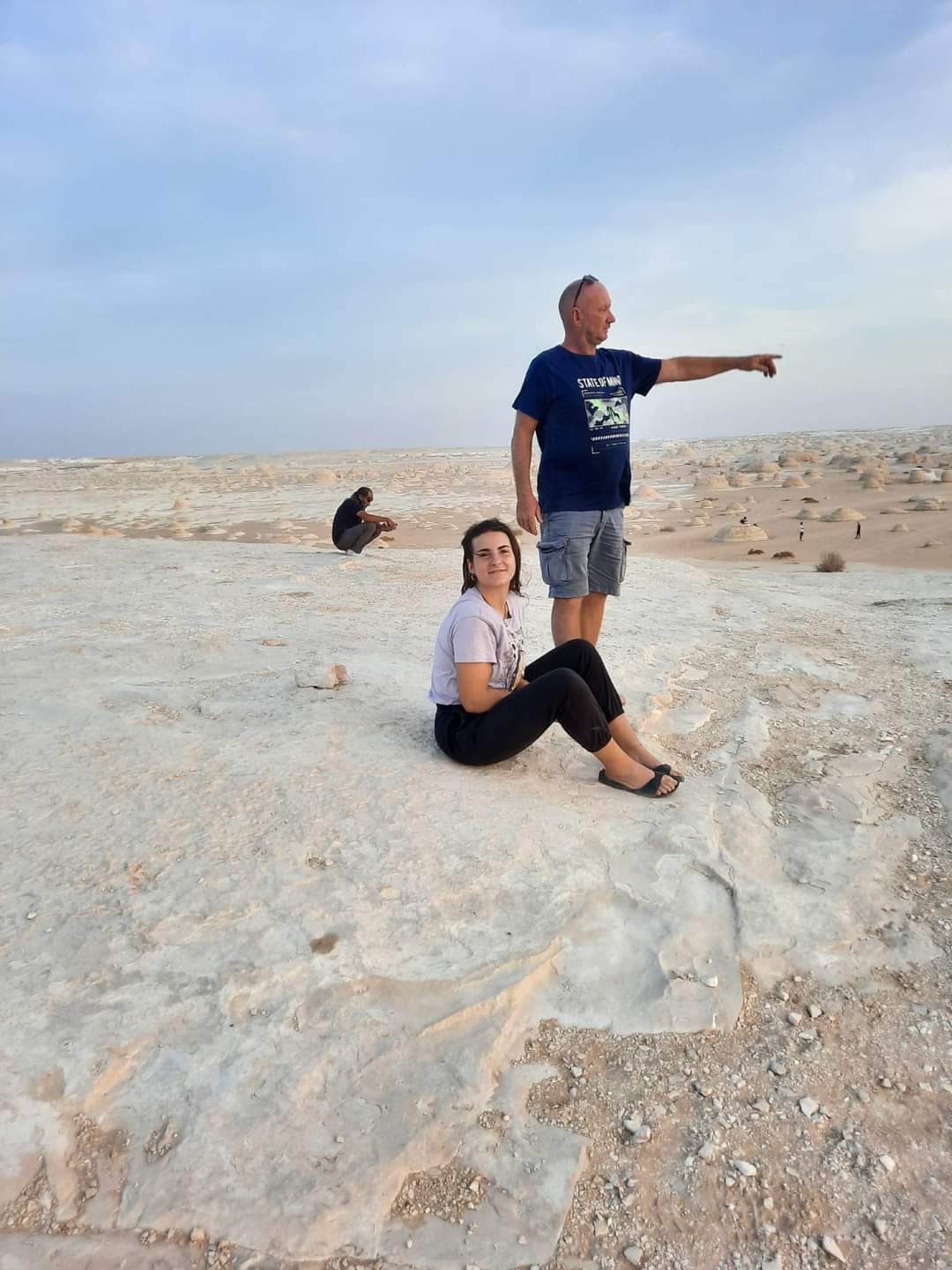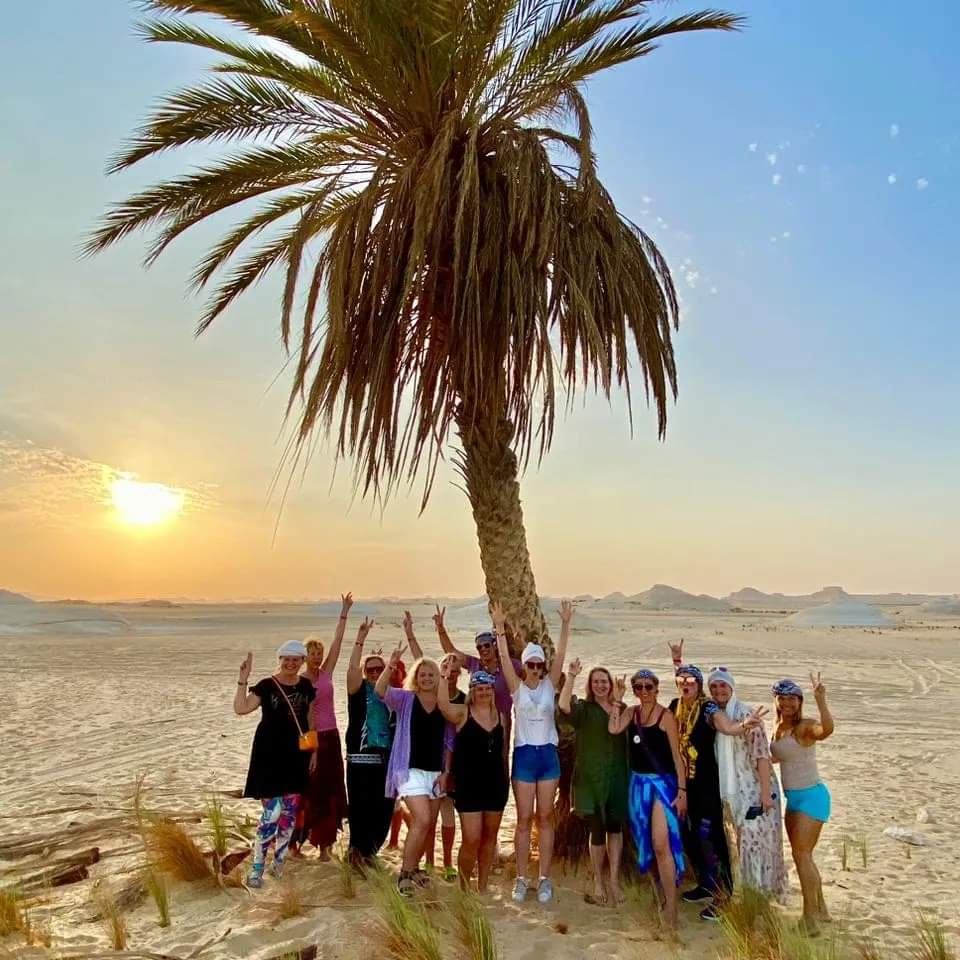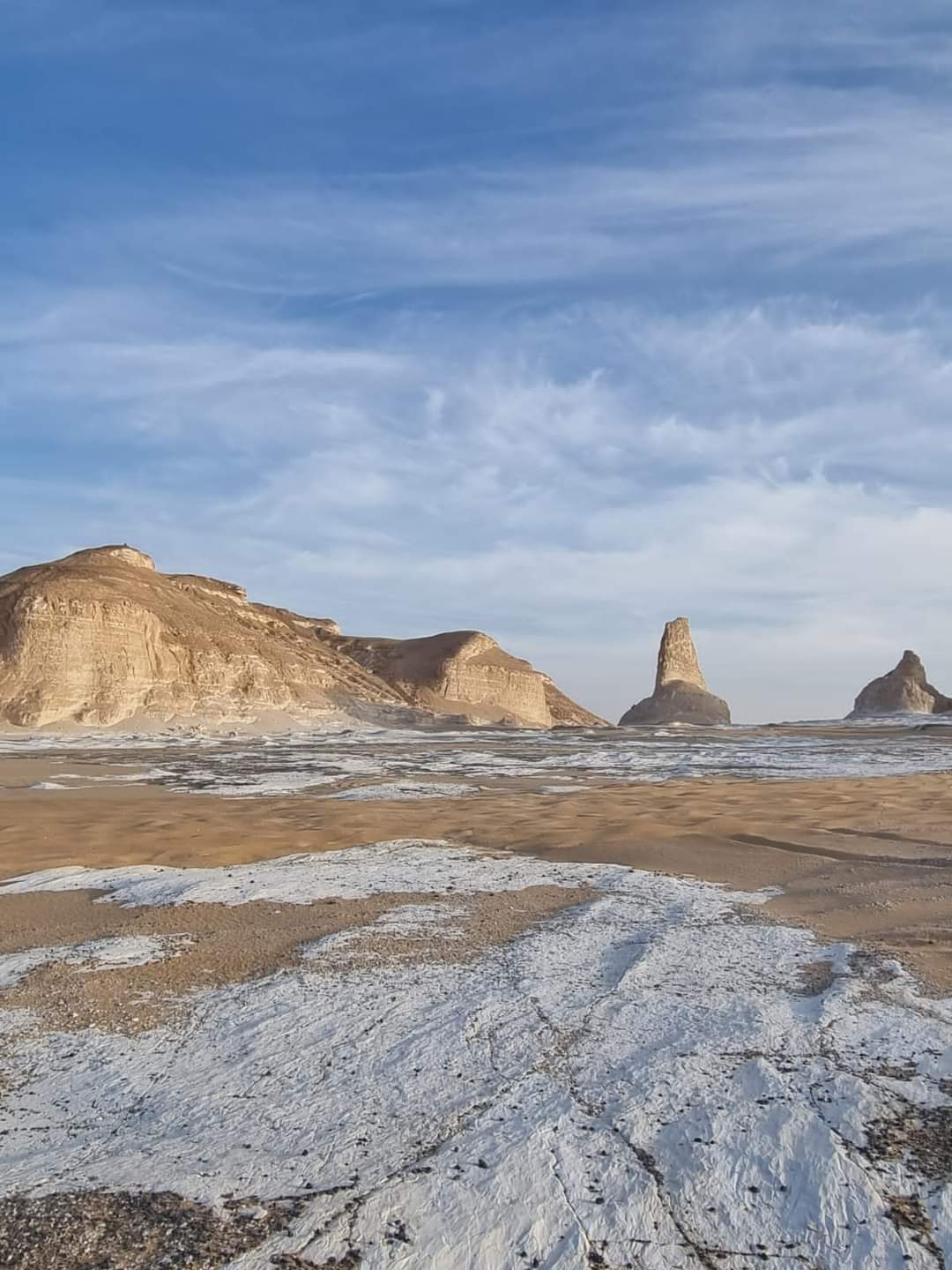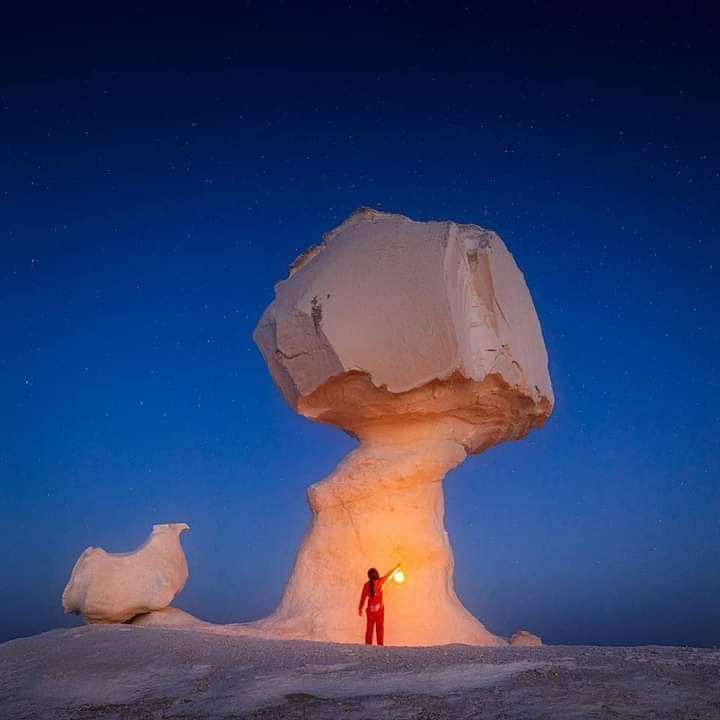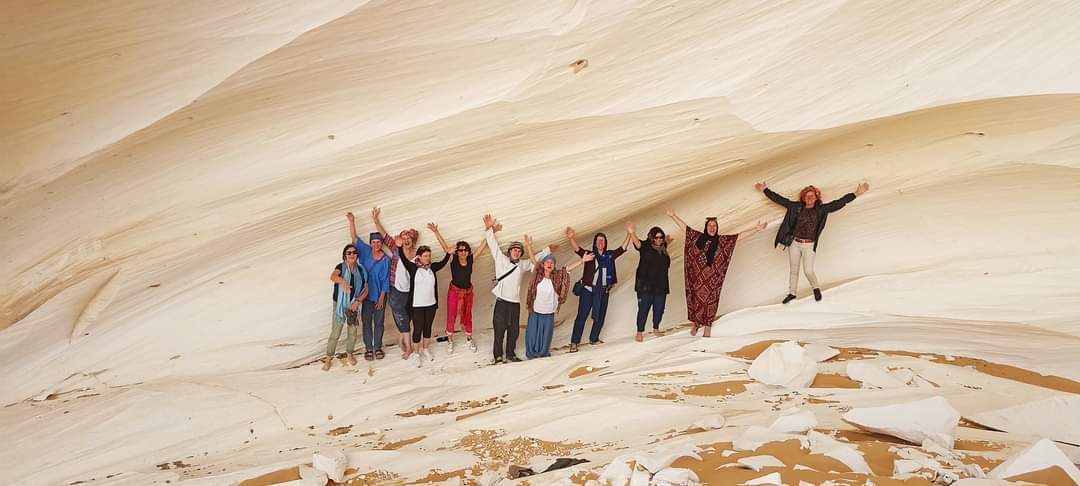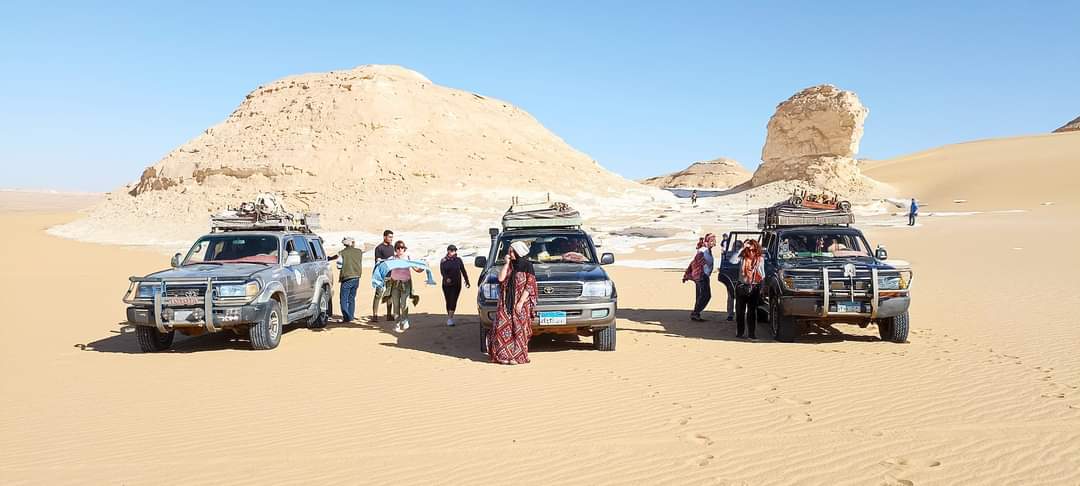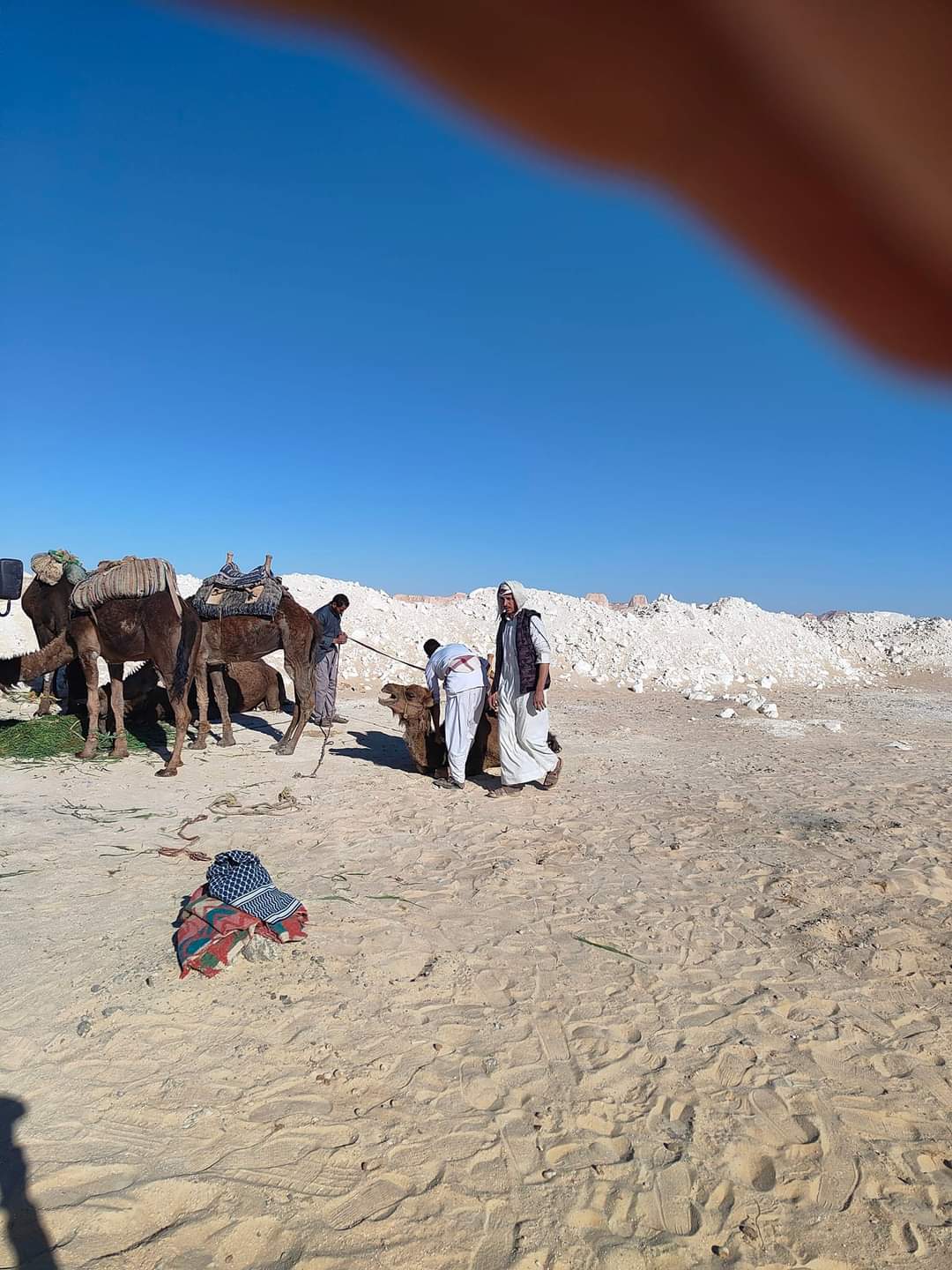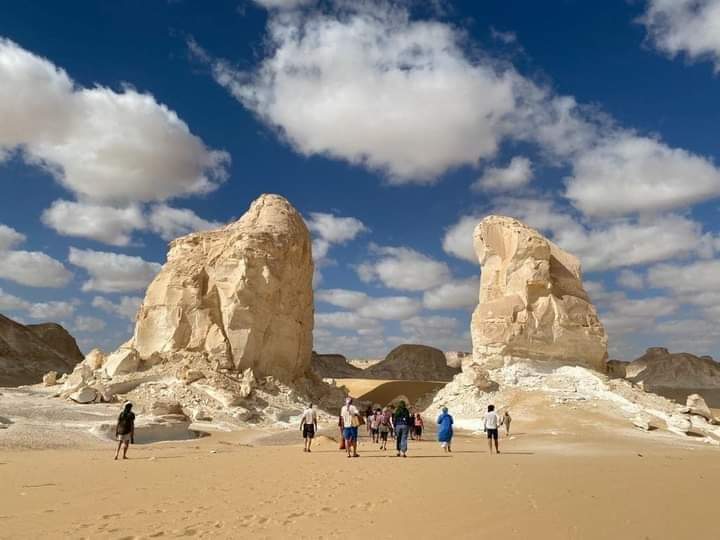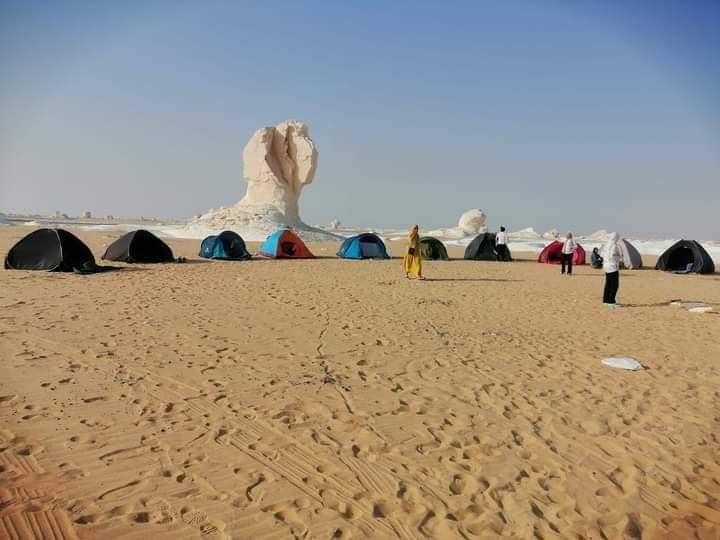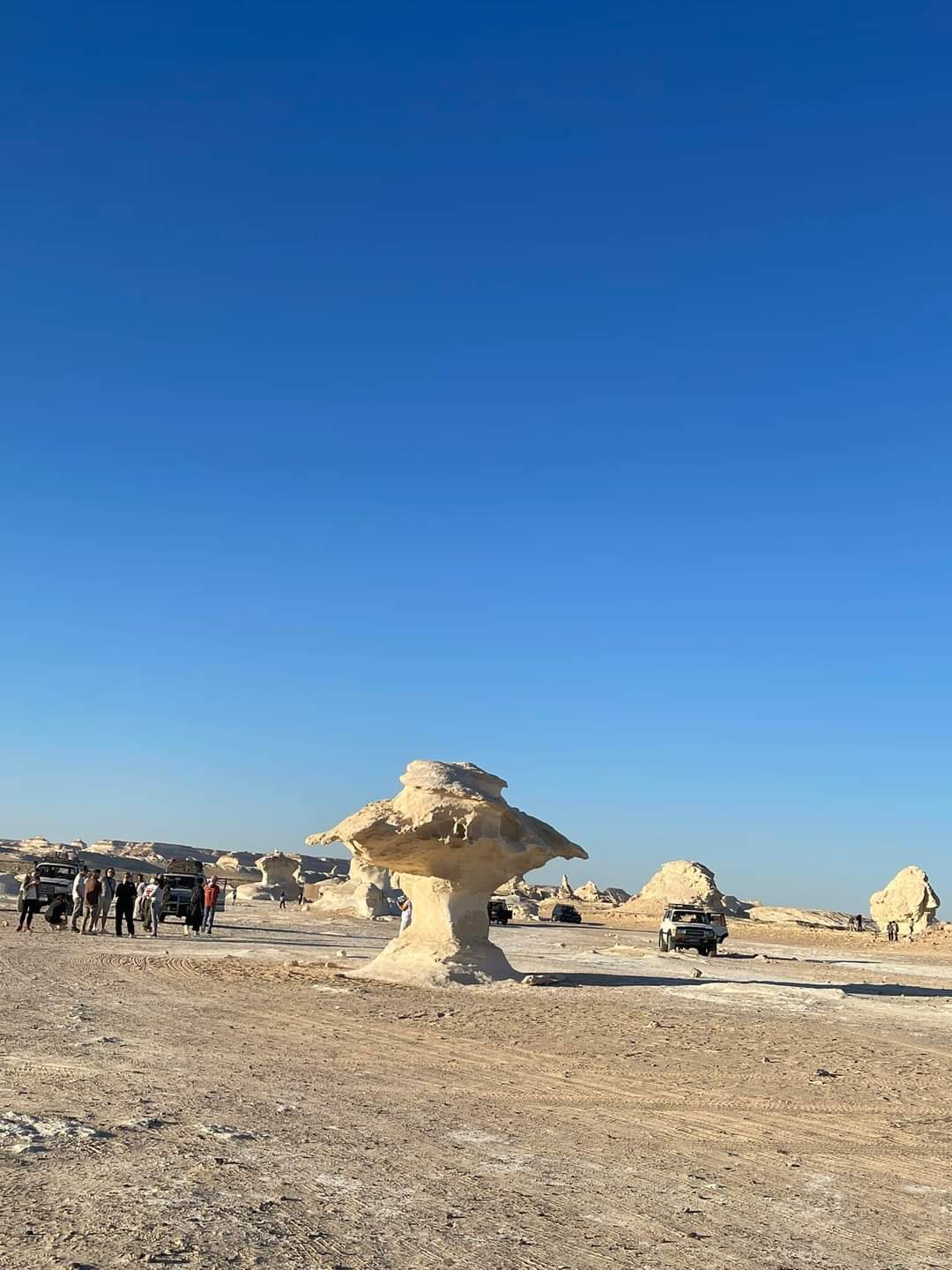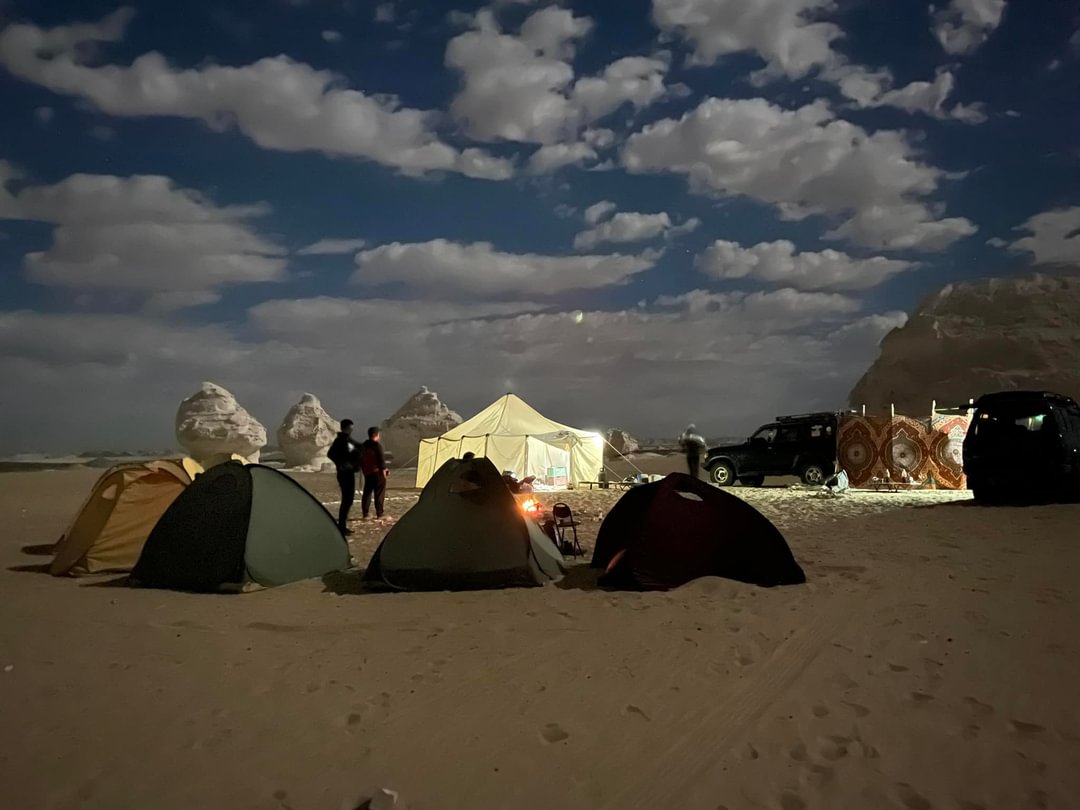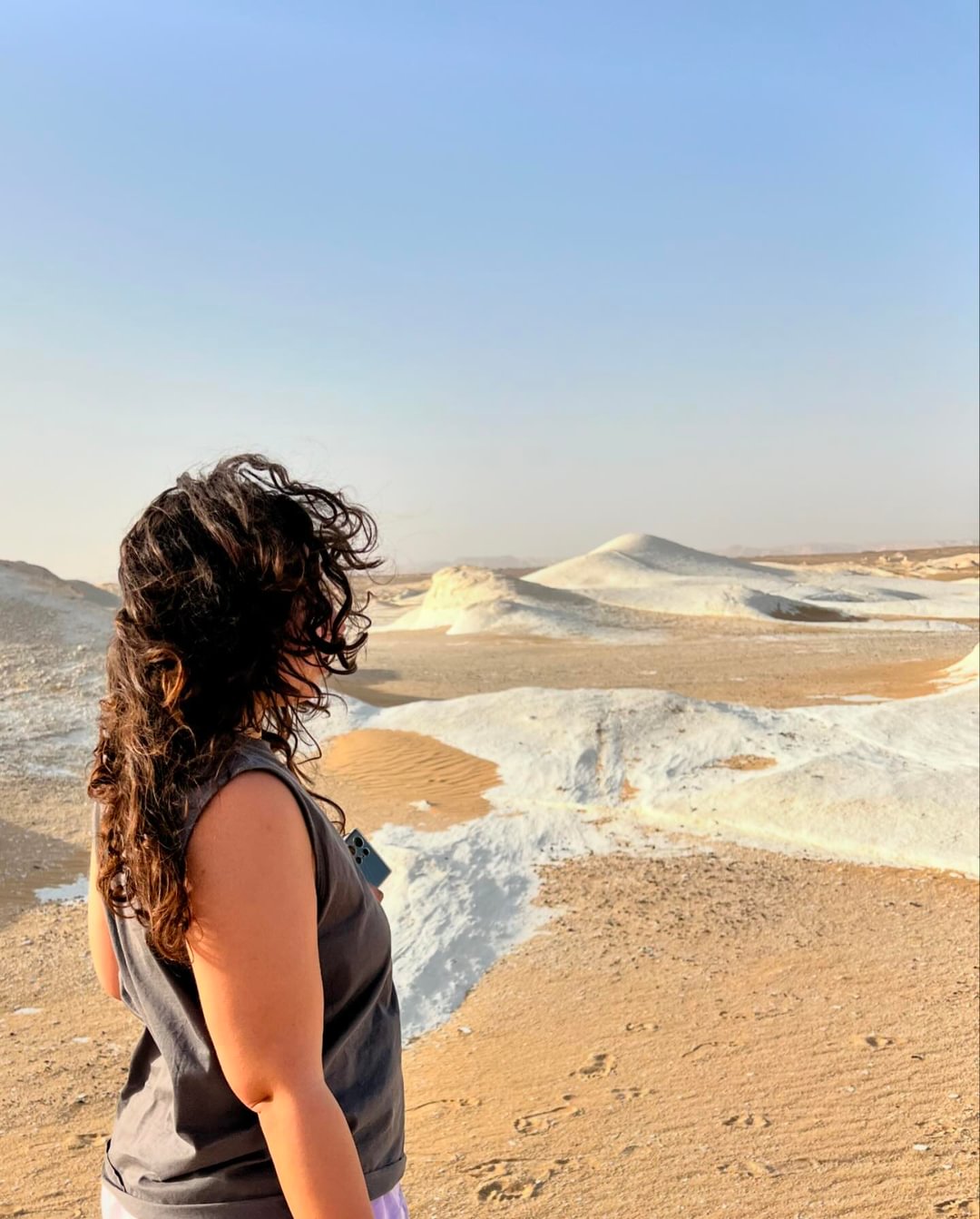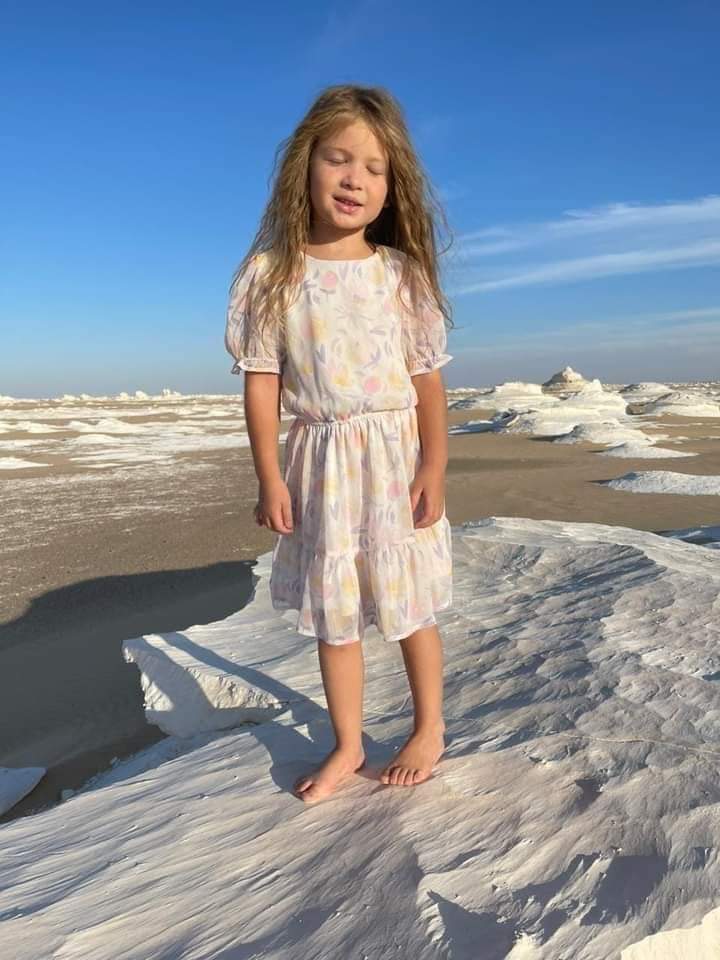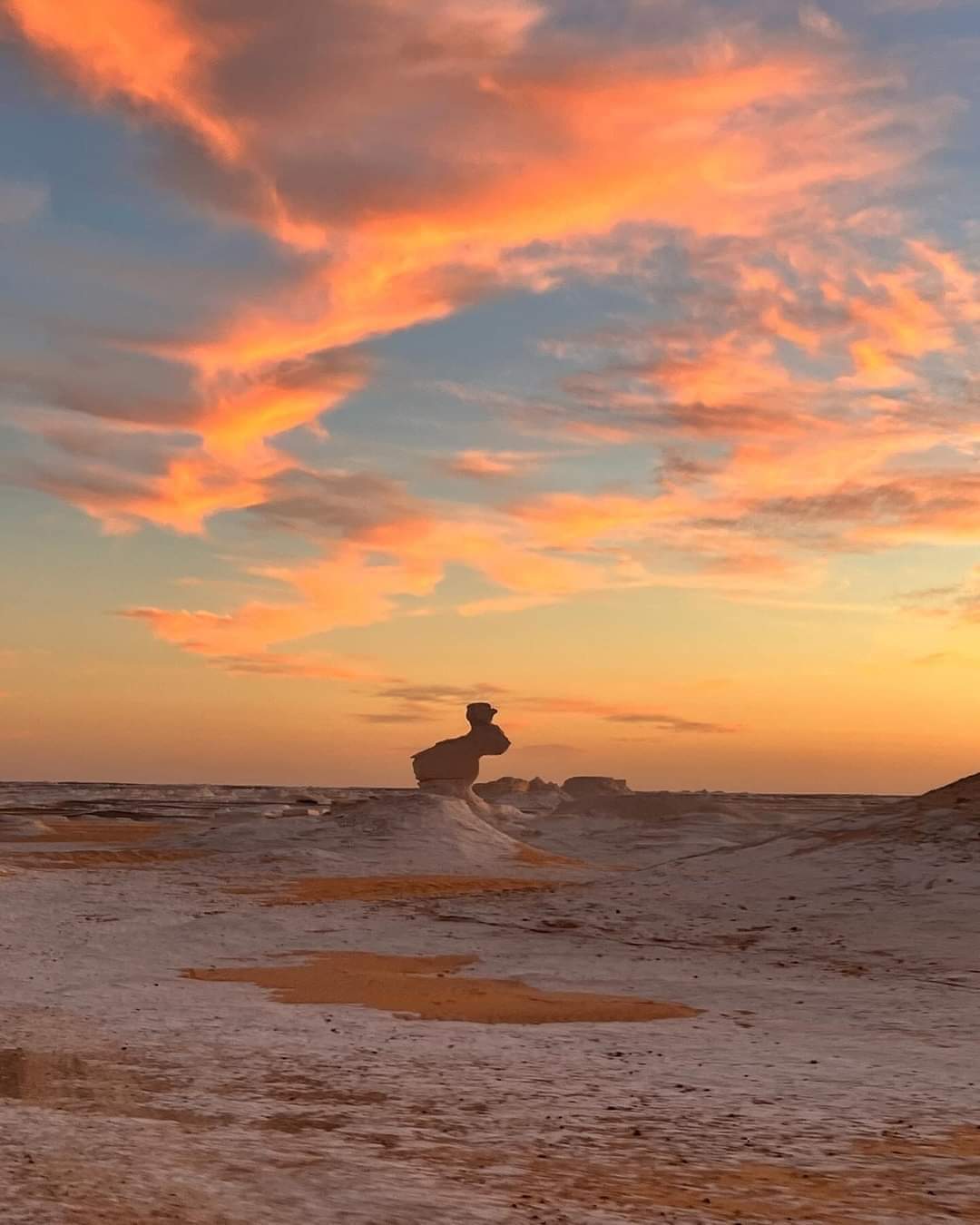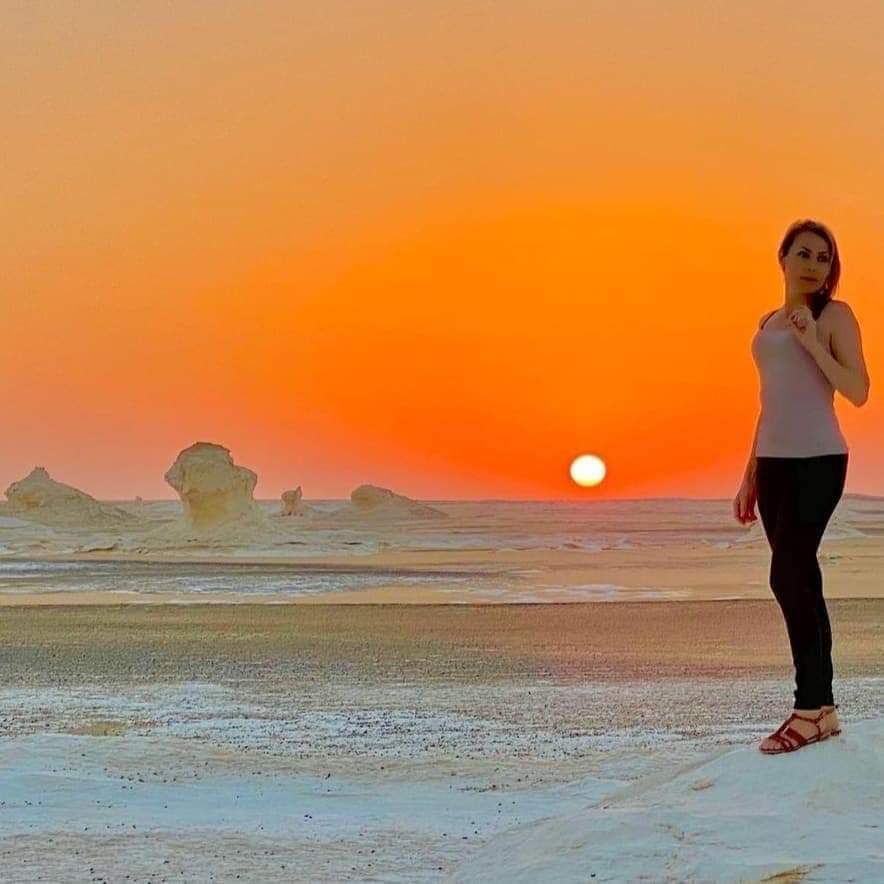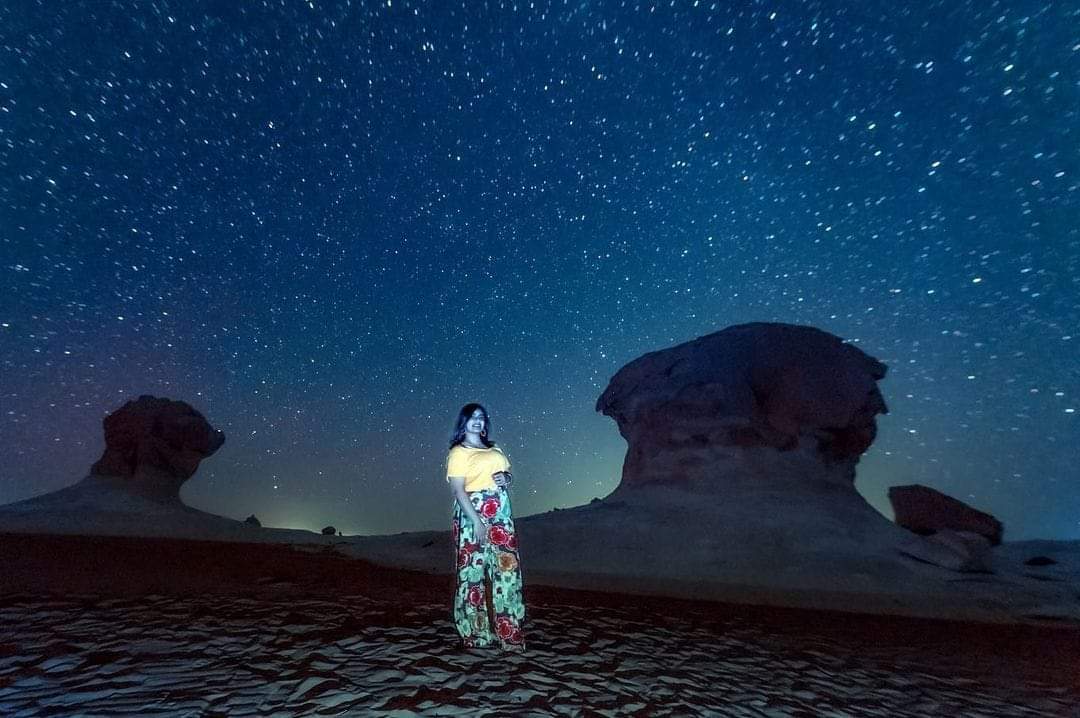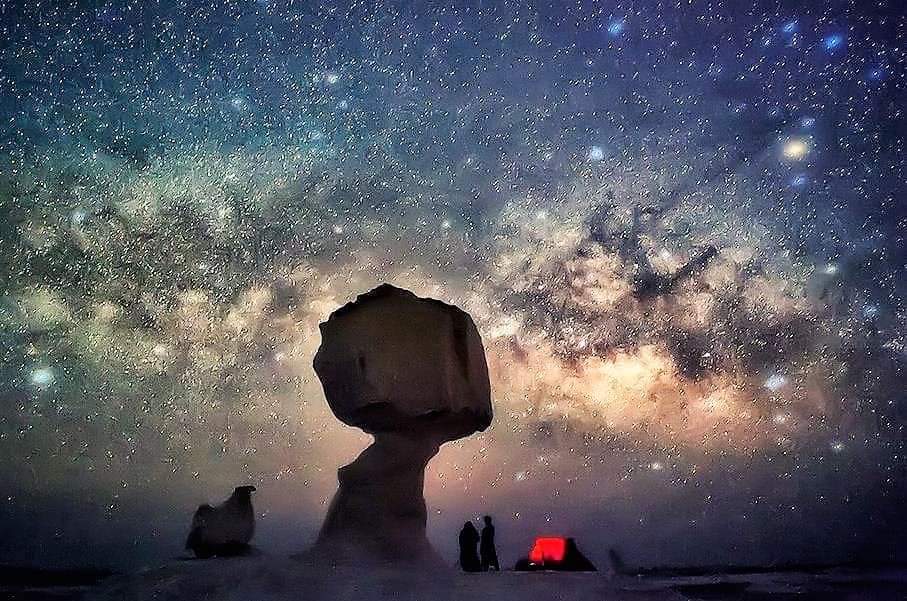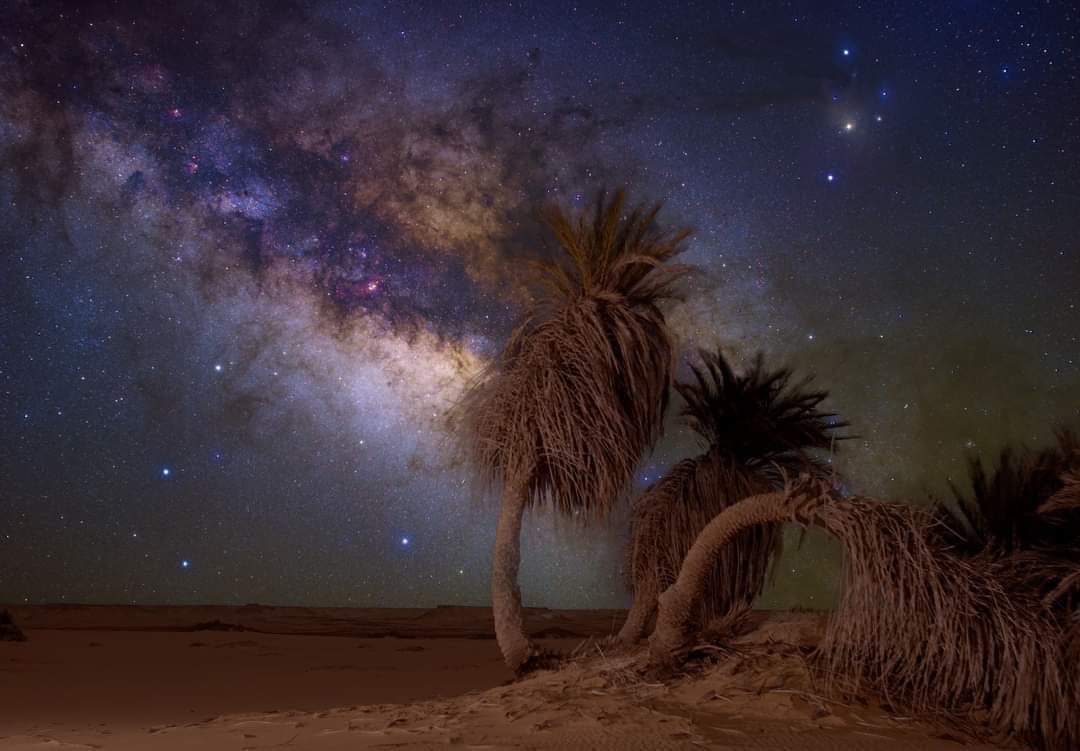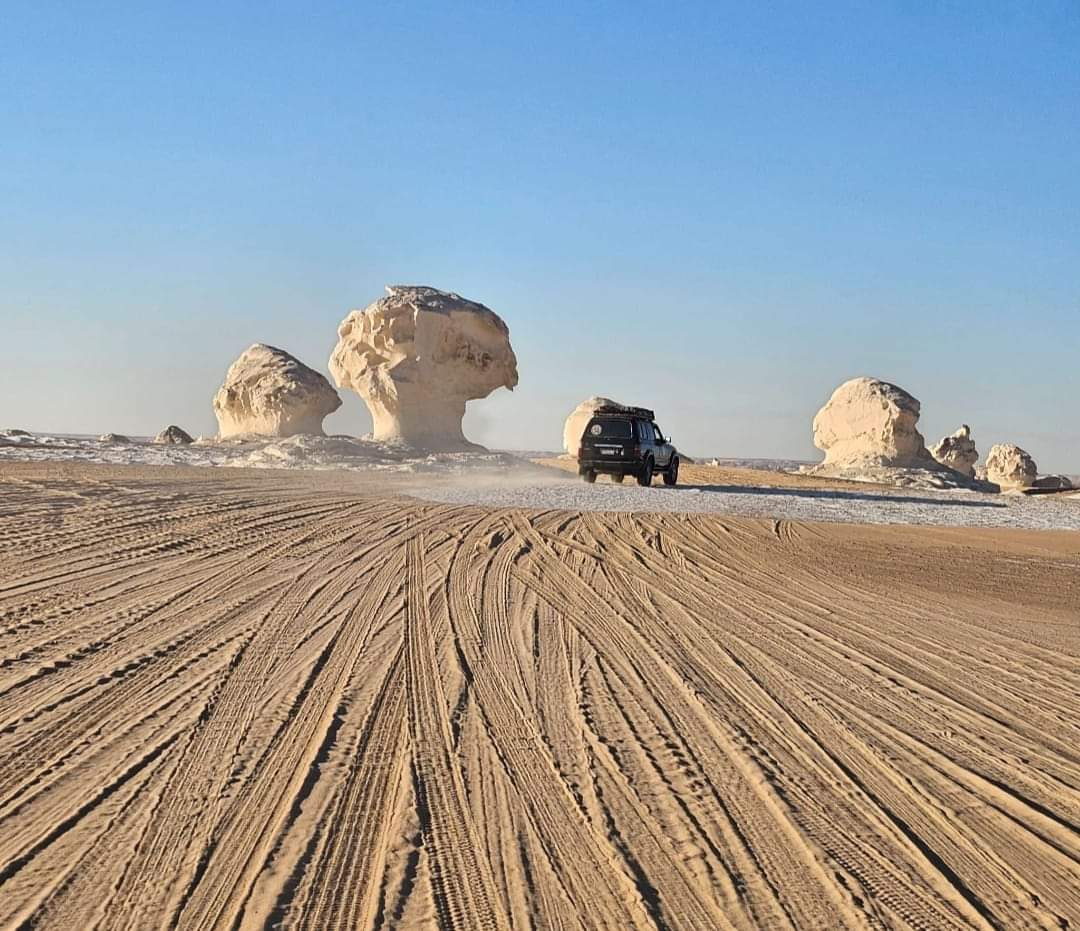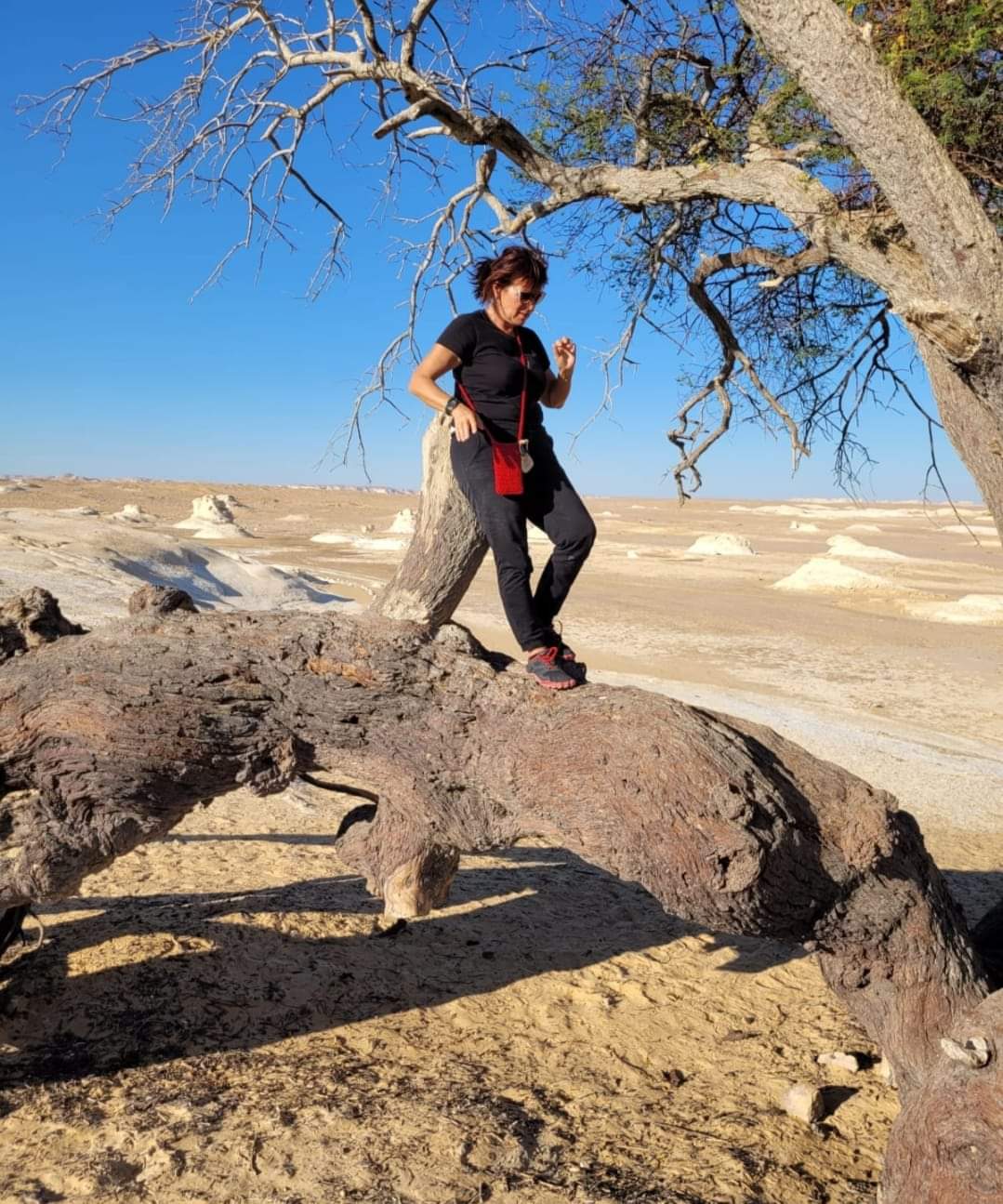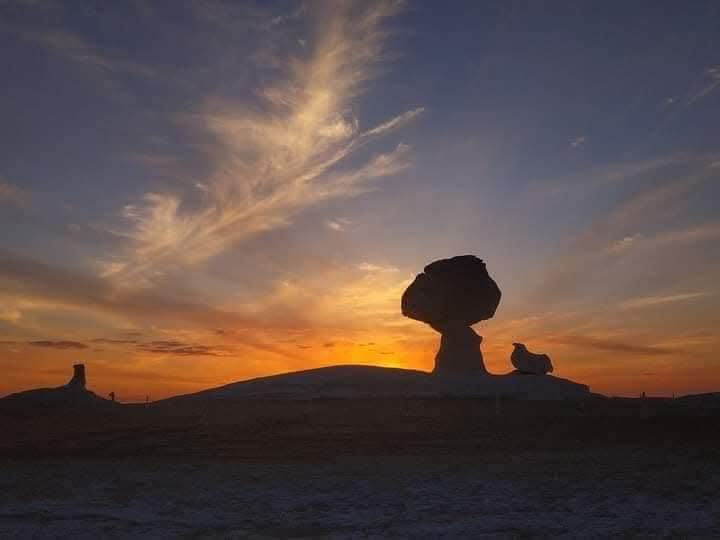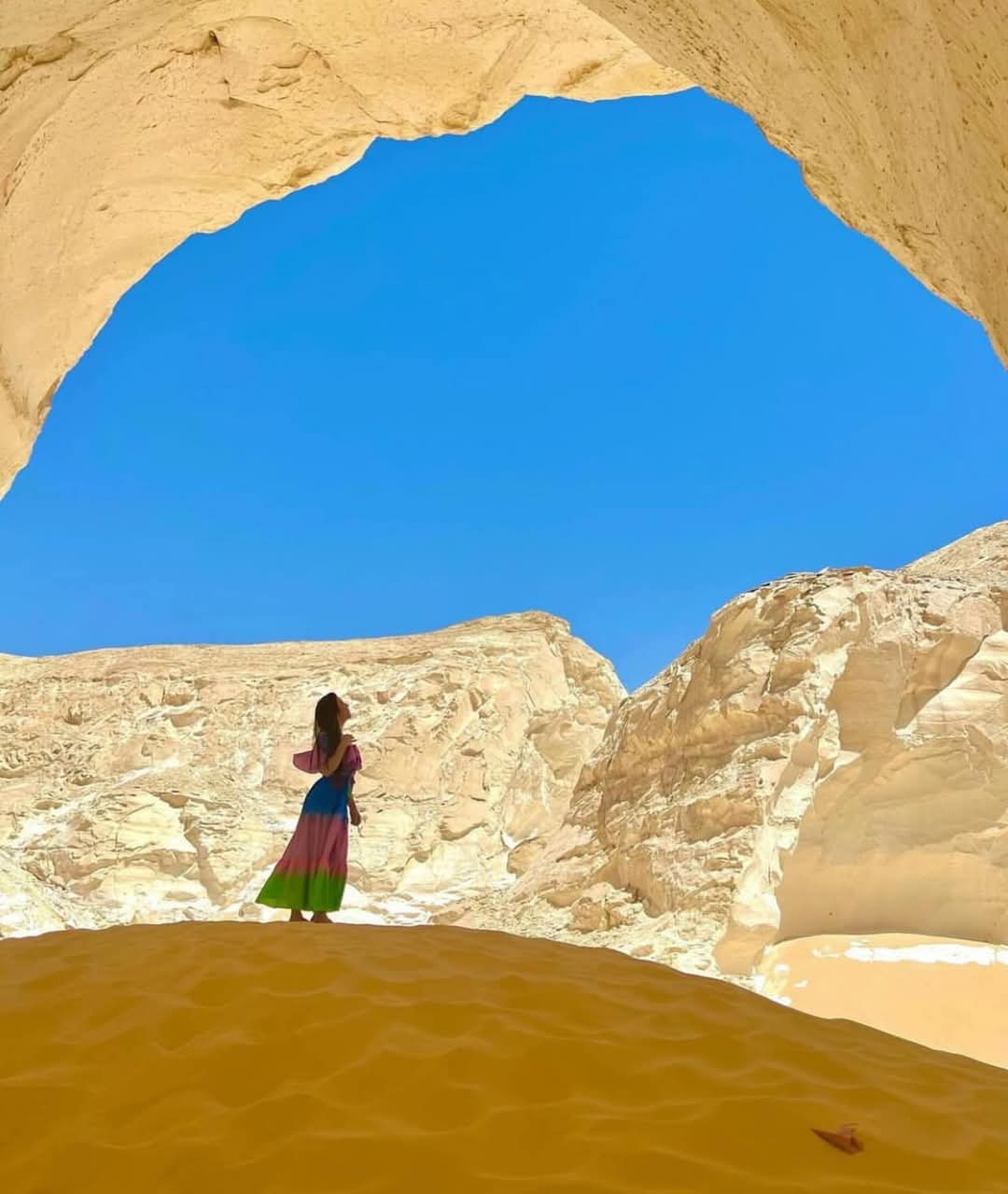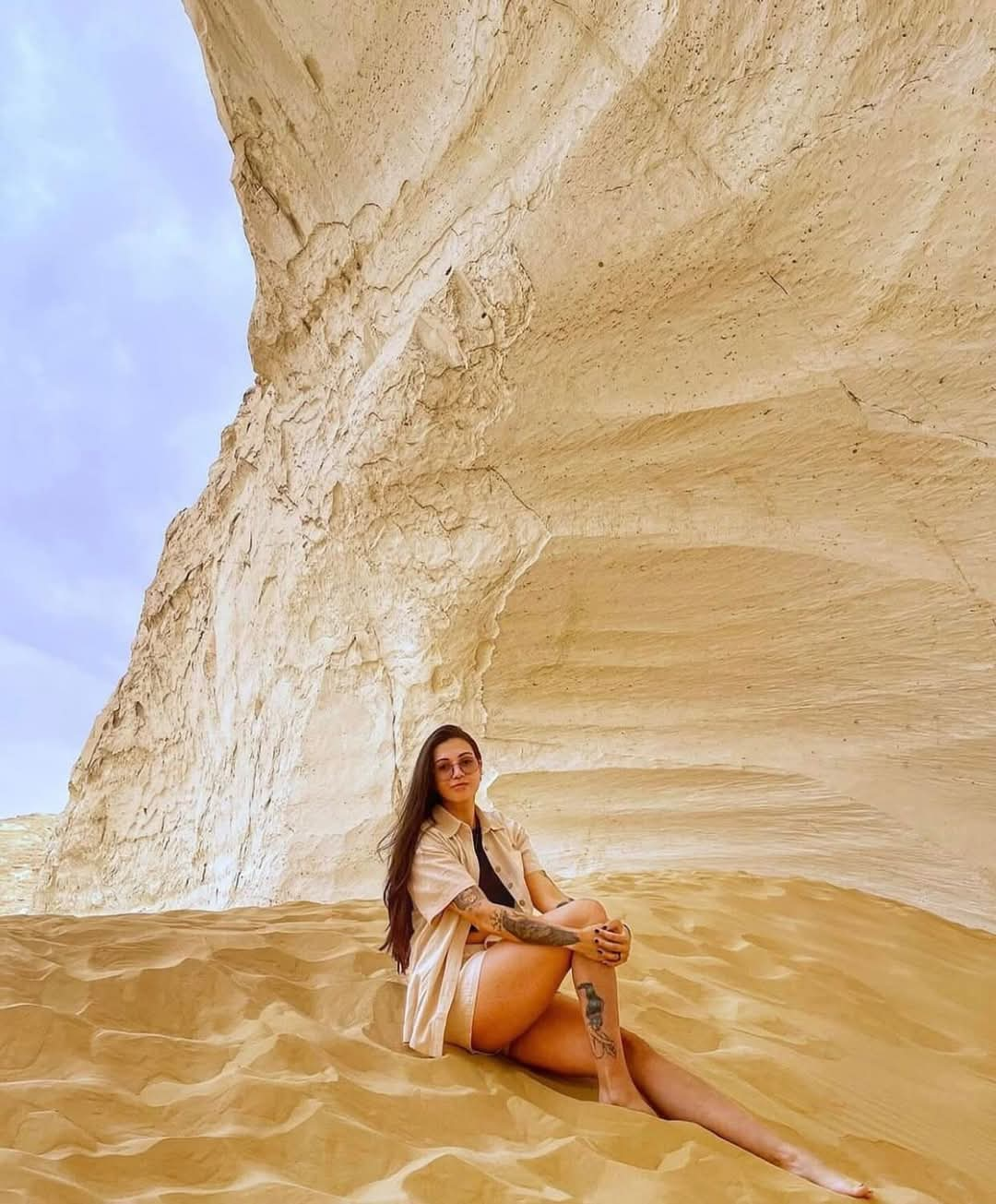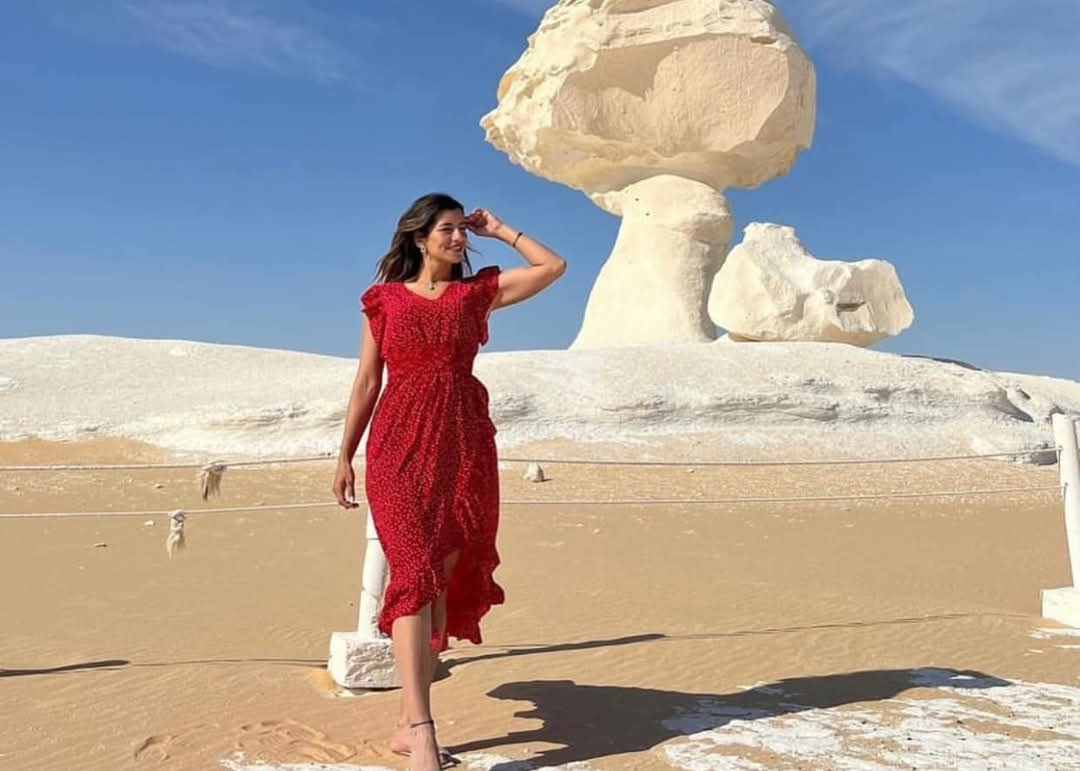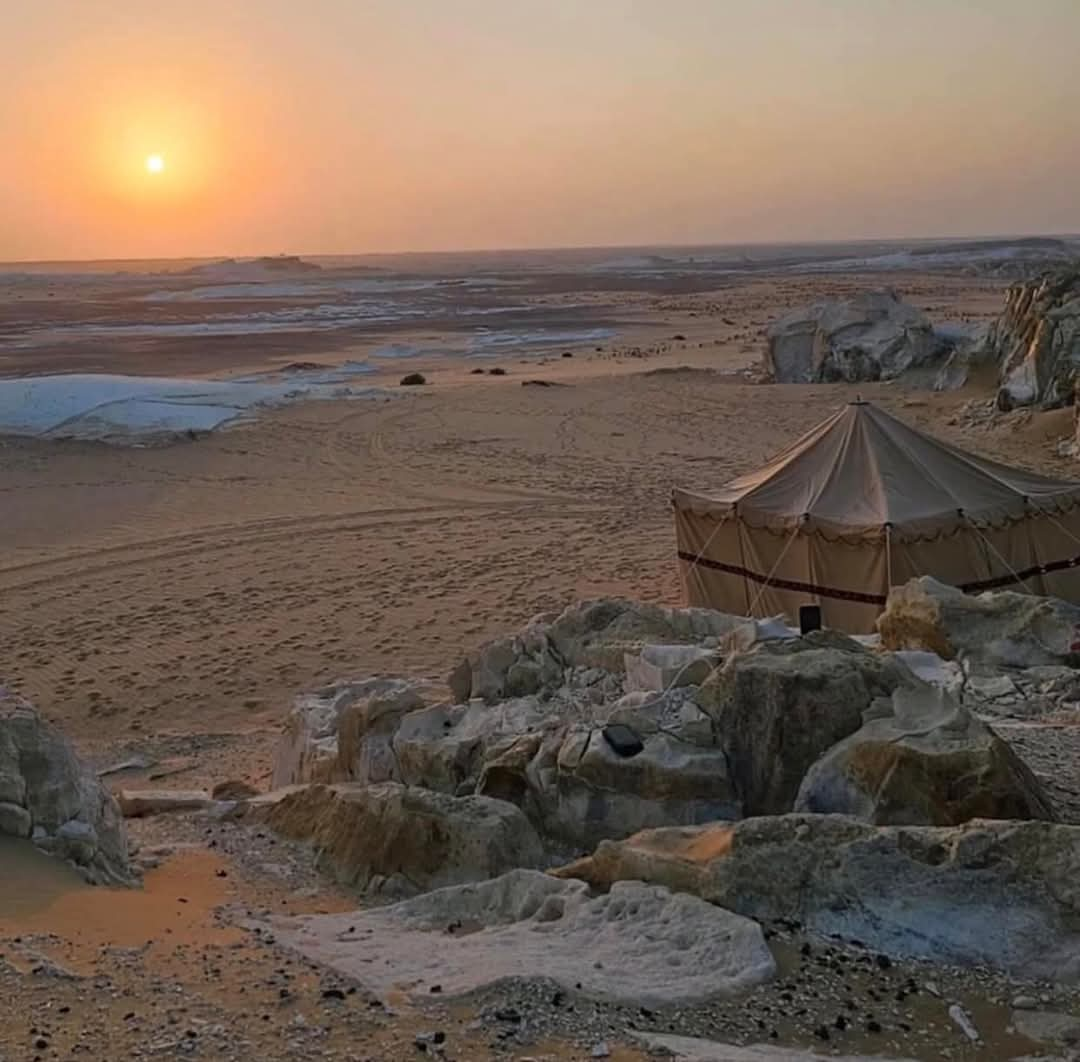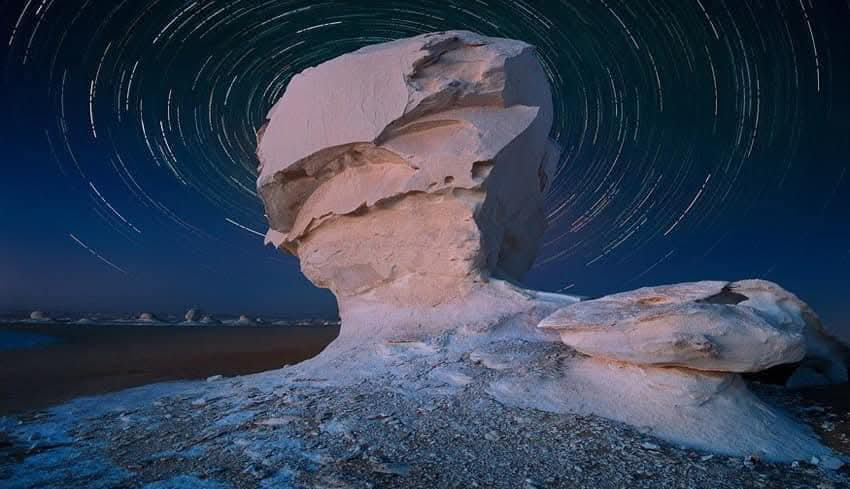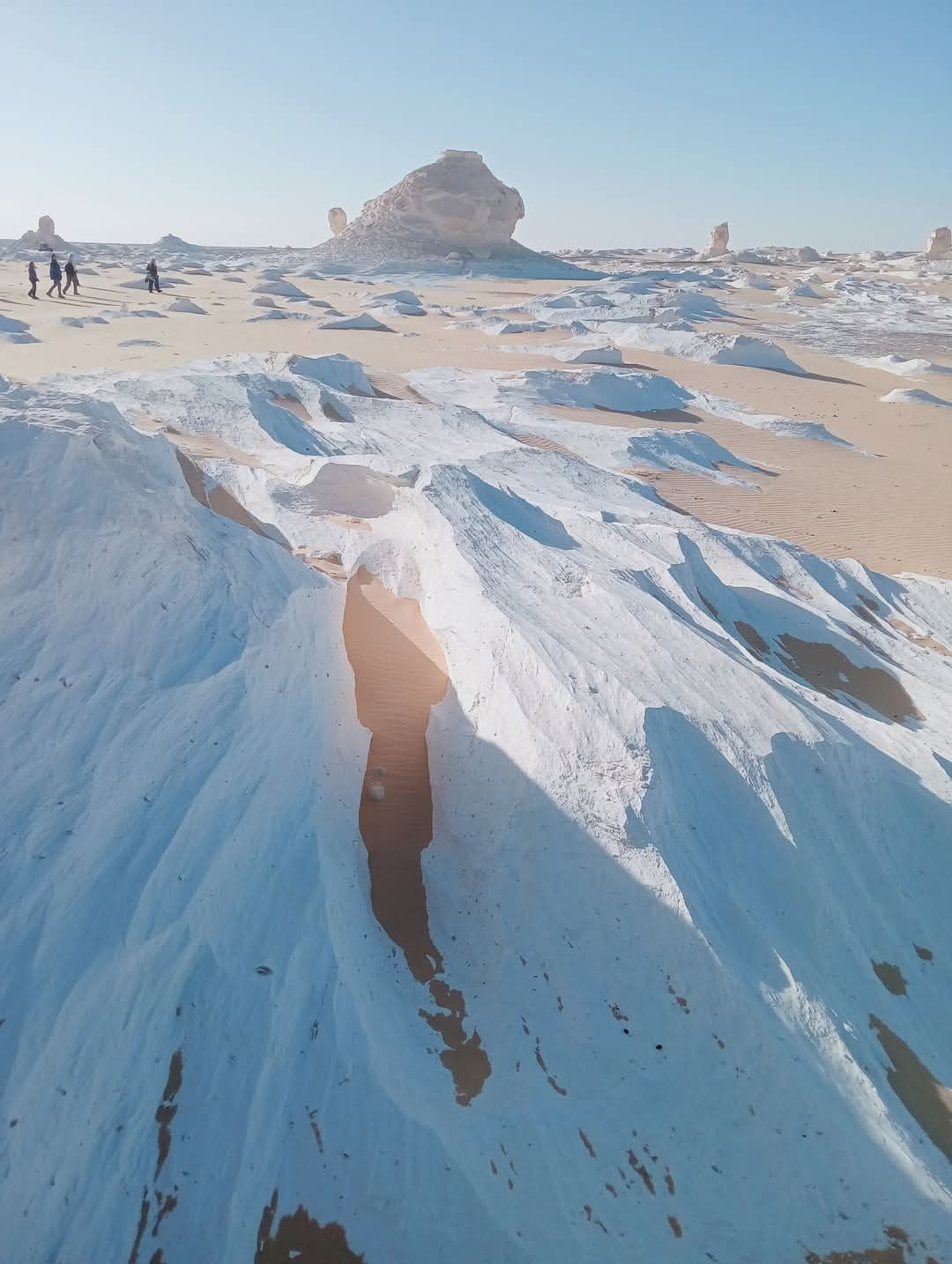The White Desert
The White Desert: Egypt’s Surreal Alabaster Wonderland
Introduction: Nature’s Sculpture Garden
Deep in Egypt’s Western Desert, approximately 500km southwest of Cairo, lies the White Desert National Park (Farafra Depression) – a 3,000 km² expanse of dazzling chalk formations that resemble a frozen Arctic landscape. This UNESCO-protected area features nature’s most imaginative limestone sculptures, carved by wind erosion over millions of years into fantastical shapes that glow under the desert sun and moonlight.
Geological Marvel
-
Formation Process:
-
80 million year old Cretaceous seabed
-
Calcium carbonate deposits from marine fossils
-
Wind erosion at 1mm per year creates “yardangs”
-
-
Unique Features:
-
Snow-white chalk spires (up to 20m tall)
-
Flint deposits creating black “desert pavement”
-
Crystal fields of quartz and calcite
-
Natural arches and mushroom formations
-
Key Formations
-
The Mushroom Field
-
Classic capped pillars
-
Best examples near Ain Khadra
-
Perfect for iconic desert photos
-
-
The Monoliths
-
Towering single formations
-
Includes famous “Chicken & Tree” formation
-
Visible for kilometers
-
-
Crystal Mountain
-
Sparkling quartz ridge
-
Natural rock arch
-
Geological wonder on desert edge
-
-
Aqabat Area
-
Dense concentration of formations
-
Maze-like passages
-
Popular camping spot
-
Ecological Significance
-
Protected Species:
-
Fennec fox
-
Dorcas gazelle
-
Sand cats (rare sightings)
-
-
Unique Flora:
-
Desert thyme
-
White desert lilies after rains
-
Medicinal plants used by Bedouins
-
-
Conservation Status:
-
National Park since 2002
-
Strict no-collecting rules
-
Limited vehicle access areas
-
Best Experiences
-
Overnight Camping
-
Unforgettable stargazing
-
Magical sunset/sunrise light
-
Bedouin-style camps with local guides
-
-
Photography Expeditions
-
Golden hour transforms landscapes
-
Moonlight creates eerie glow
-
Abstract pattern opportunities
-
-
Geological Exploration
-
Fossil hunting (approved areas)
-
Understanding formation processes
-
Crystal field visits
-
-
Desert Meditation
-
Unmatched silence and solitude
-
Spiritual connection with nature
-
Yoga at sunrise
-
Visitor Essentials
Access Points:
-
From Bahariya Oasis (2-3 hour 4×4 journey)
-
From Farafra Oasis (closest town, 1 hour)
Best Times:
-
October-April (daytime 20-28°C)
-
Full moon periods for night photography
-
Avoid summer (extreme heat) and sandstorm seasons
Required Gear:
-
Sturdy walking shoes
-
Warm layers (cold nights)
-
Sun protection (hat, SPF50+)
-
Camera with extra batteries
Safety Considerations:
-
Never travel without experienced guide
-
Carry 5L water per person daily
-
GPS/satellite communication advised
-
Watch for sudden weather changes
Nearby Attractions
-
Black Desert (north)
-
Volcanic landscapes
-
Gebel Galaa viewpoint
-
-
Farafra Oasis
-
Traditional mud-brick town
-
Badr’s Art Museum
-
-
Dakhla Oasis
-
Medieval Islamic villages
-
Roman-era temples
-
Cultural Connections
-
Bedouin Heritage:
-
Ancient navigation knowledge
-
Star lore and desert wisdom
-
Traditional camping methods
-
-
Modern Inspirations:
-
Featured in Egyptian films
-
International artist retreats
-
Astronomy research site
-
Photography Tips
-
Light Mastery:
-
Blue hour for cool tones
-
Midday for abstract shadows
-
Moonlight for monochrome
-
-
Composition Ideas:
-
Isolate single formations
-
Capture endless repetition
-
Play with scale (include people)
-
-
Equipment Advice:
-
Polarizing filter enhances contrast
-
Wide angle for landscapes
-
Macro for crystal details
-
Why Visit the White Desert?
-
Unearthly Beauty: Like walking on another planet
-
Profound Silence: Rare auditory vacuum
-
Geological Wonder: Nature’s art gallery
-
Dark Sky Sanctuary: Magnificent stargazing
-
Digital Detox: Total disconnection from modern life
Responsible Tourism Practices
-
Stay on established tracks
-
Pack out all waste
-
Respect fragile formations
-
Support local Bedouin guides
-
Conserve precious water
Conclusion: A Desert Like No Other
The White Desert offers one of Egypt’s most transcendent travel experiences – where time stands still amidst nature’s most imaginative sculptures. More than just a visual spectacle, this mineral wonderland invites profound connection with the earth’s artistic forces. Whether camping under infinite stars, photographing surreal formations at dawn, or simply marveling at wind-carved masterpieces, visitors leave transformed by the desert’s silent magic. As Egypt’s most pristine wilderness area, the White Desert promises adventure, inspiration, and perspective – reminding us of nature’s infinite creativity and our small place within it.
